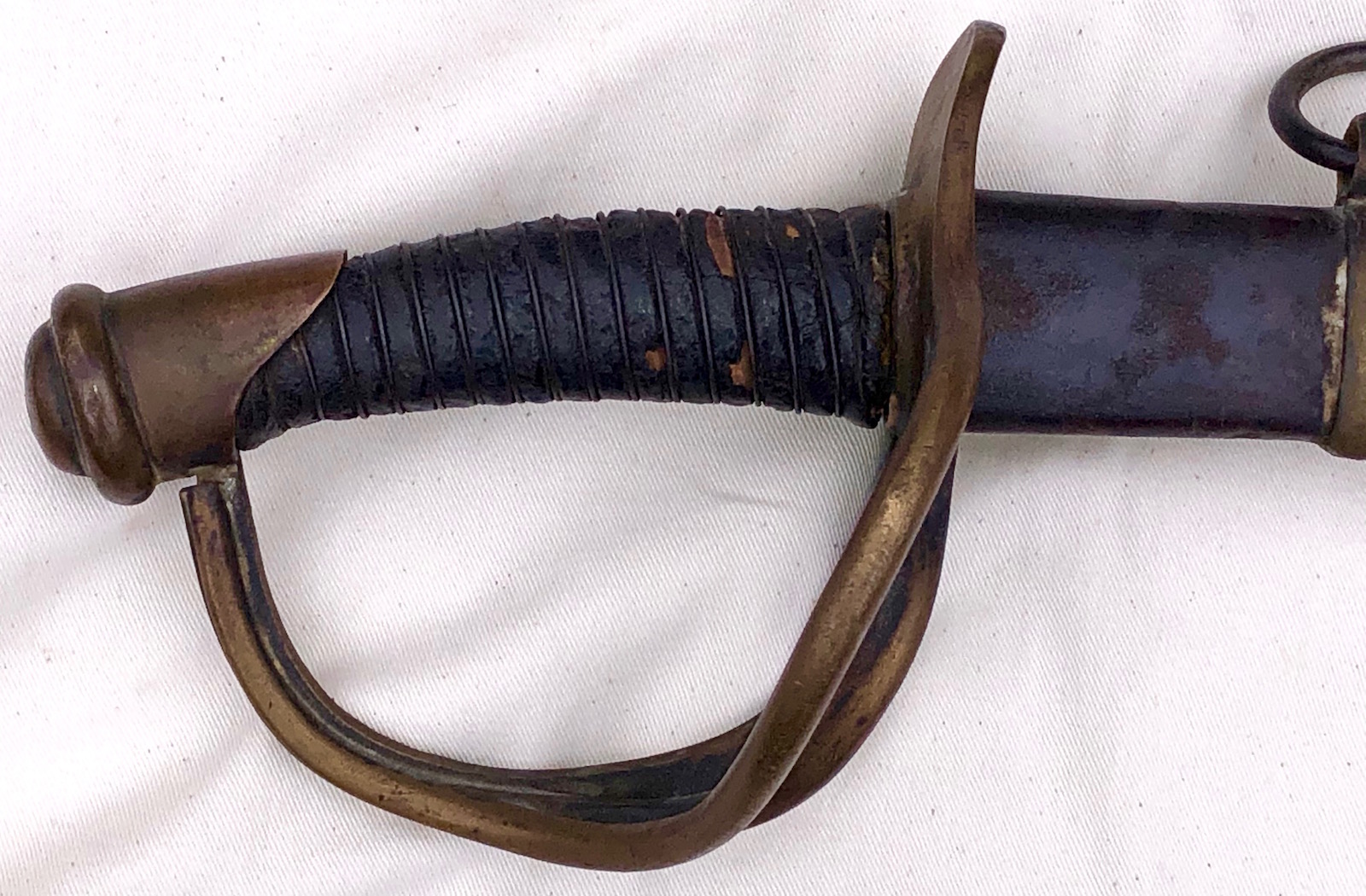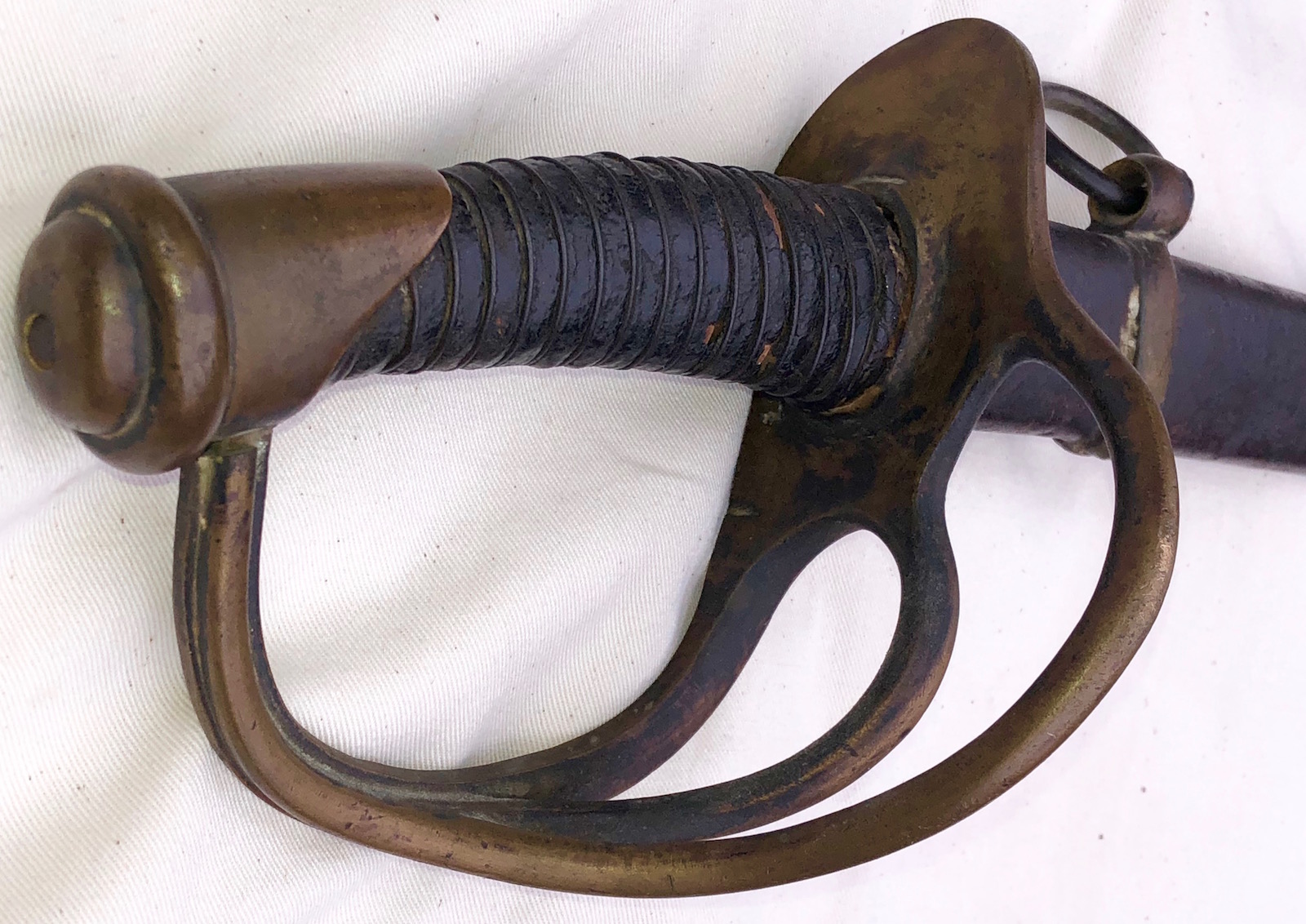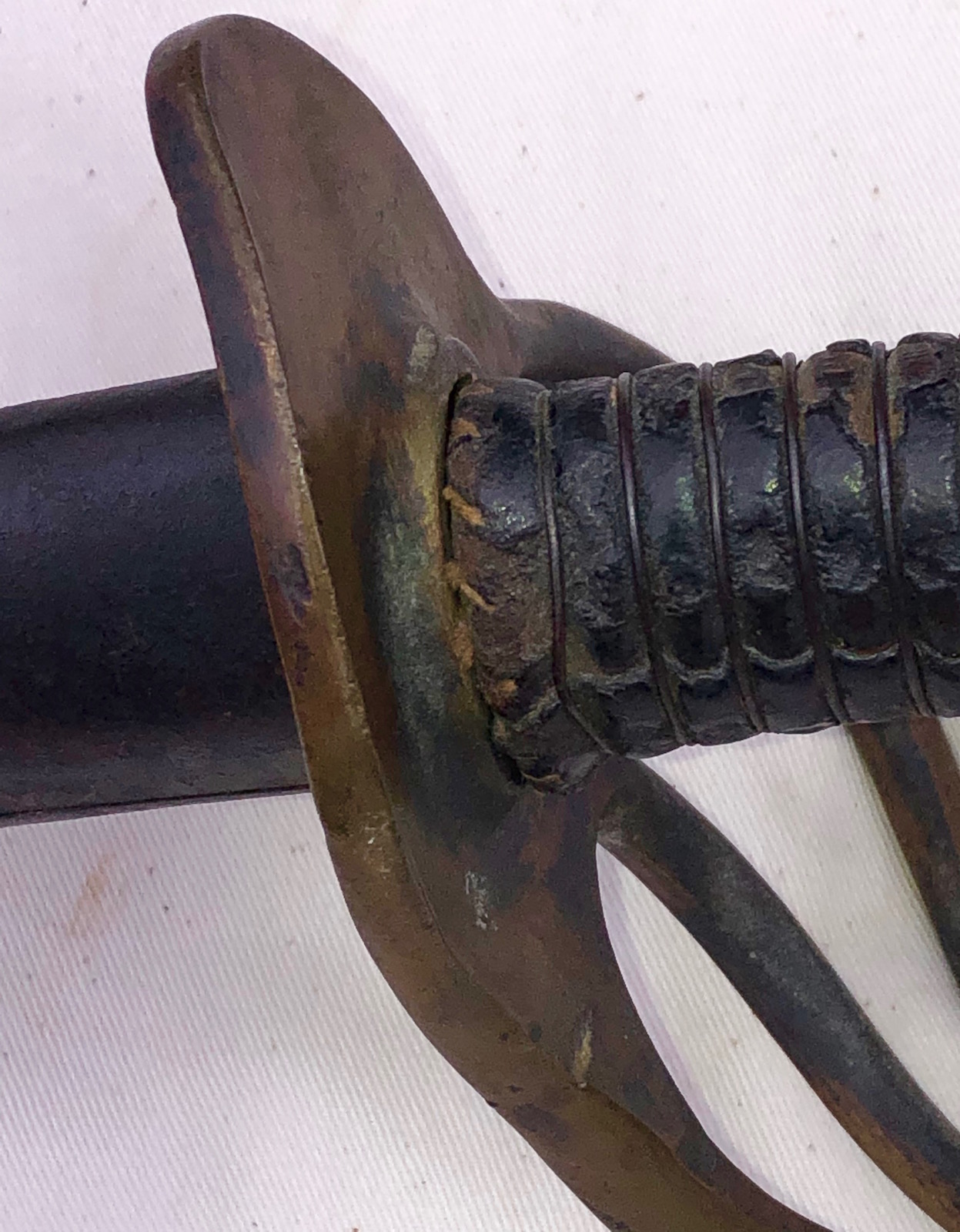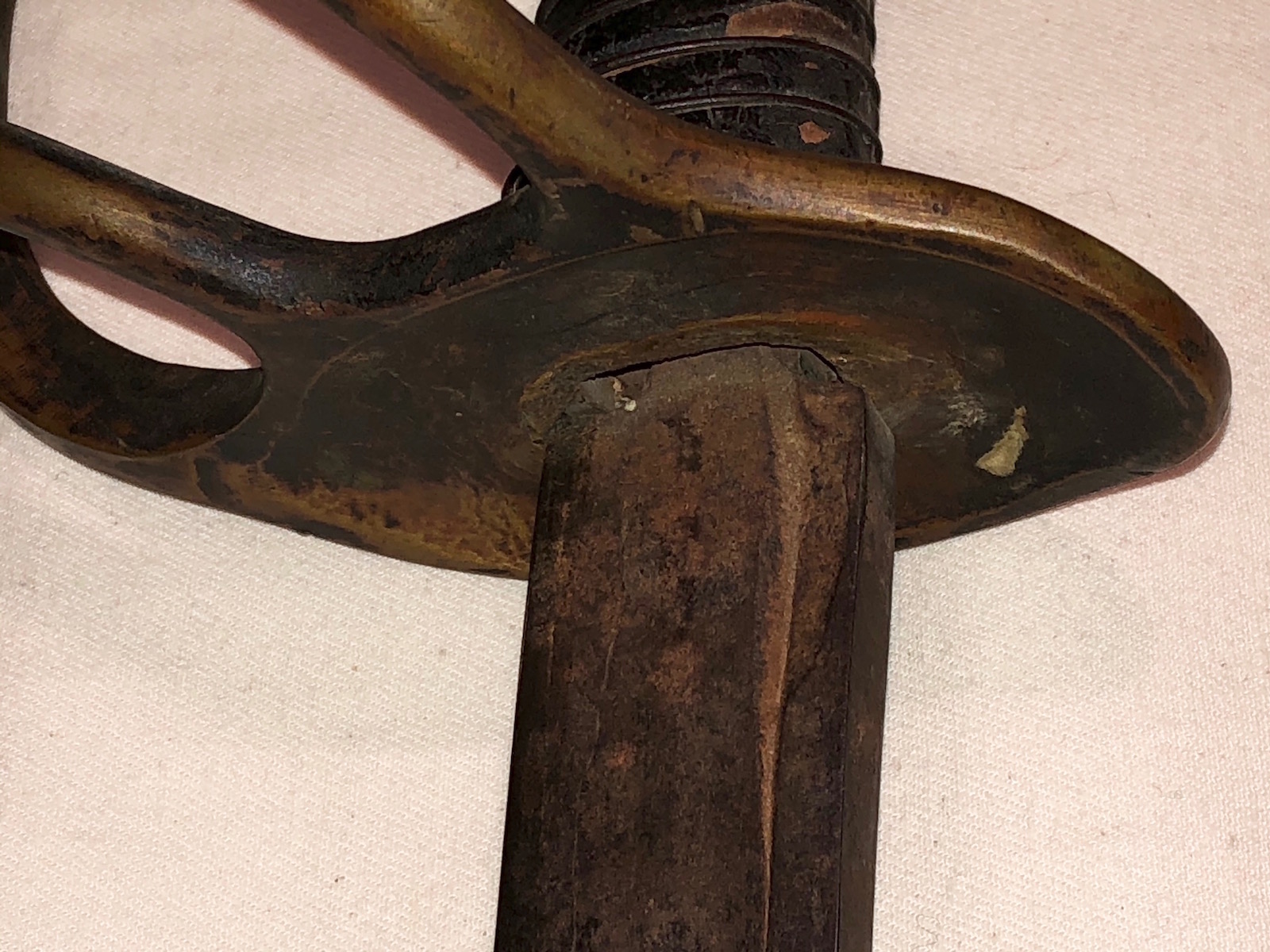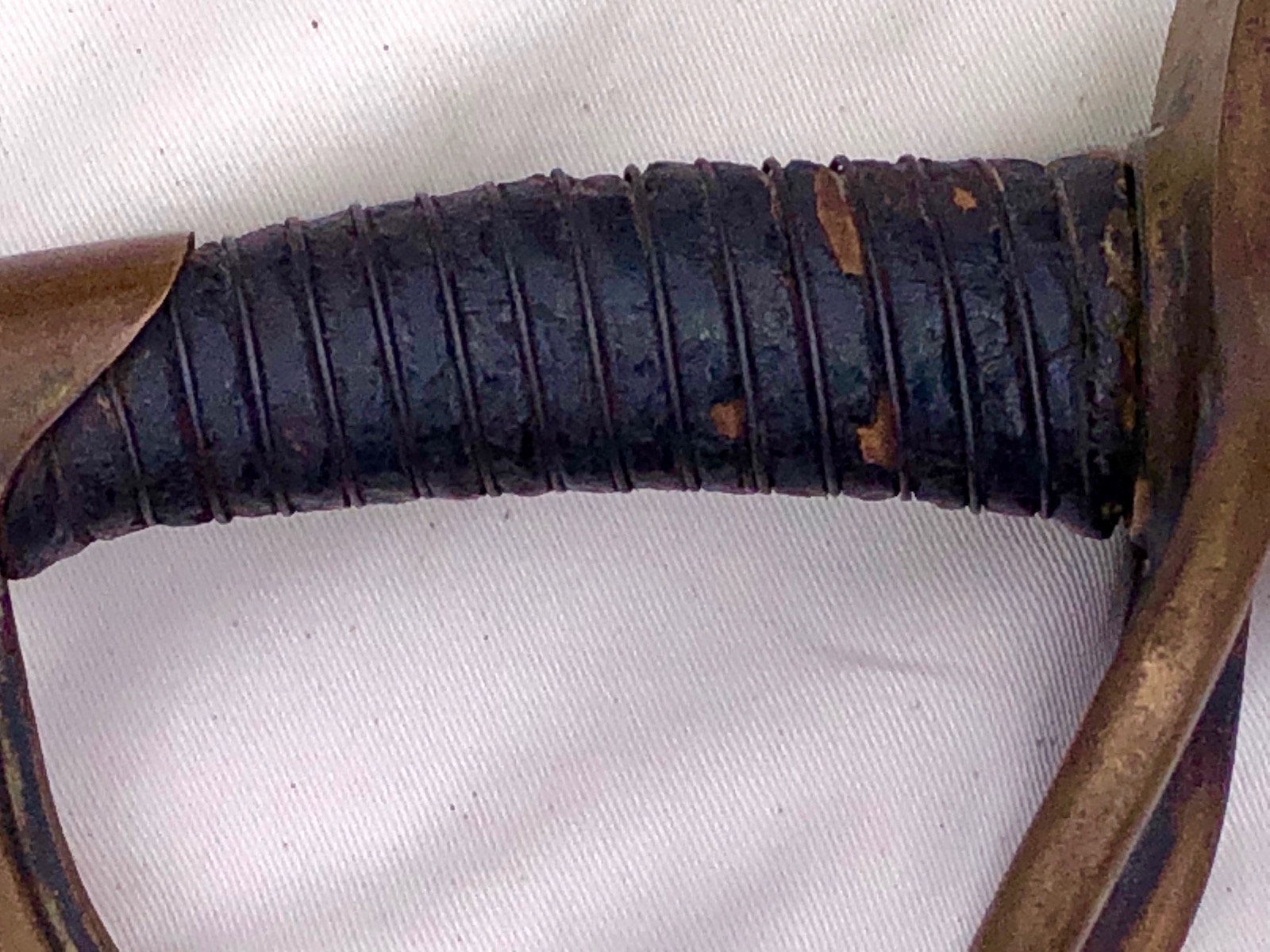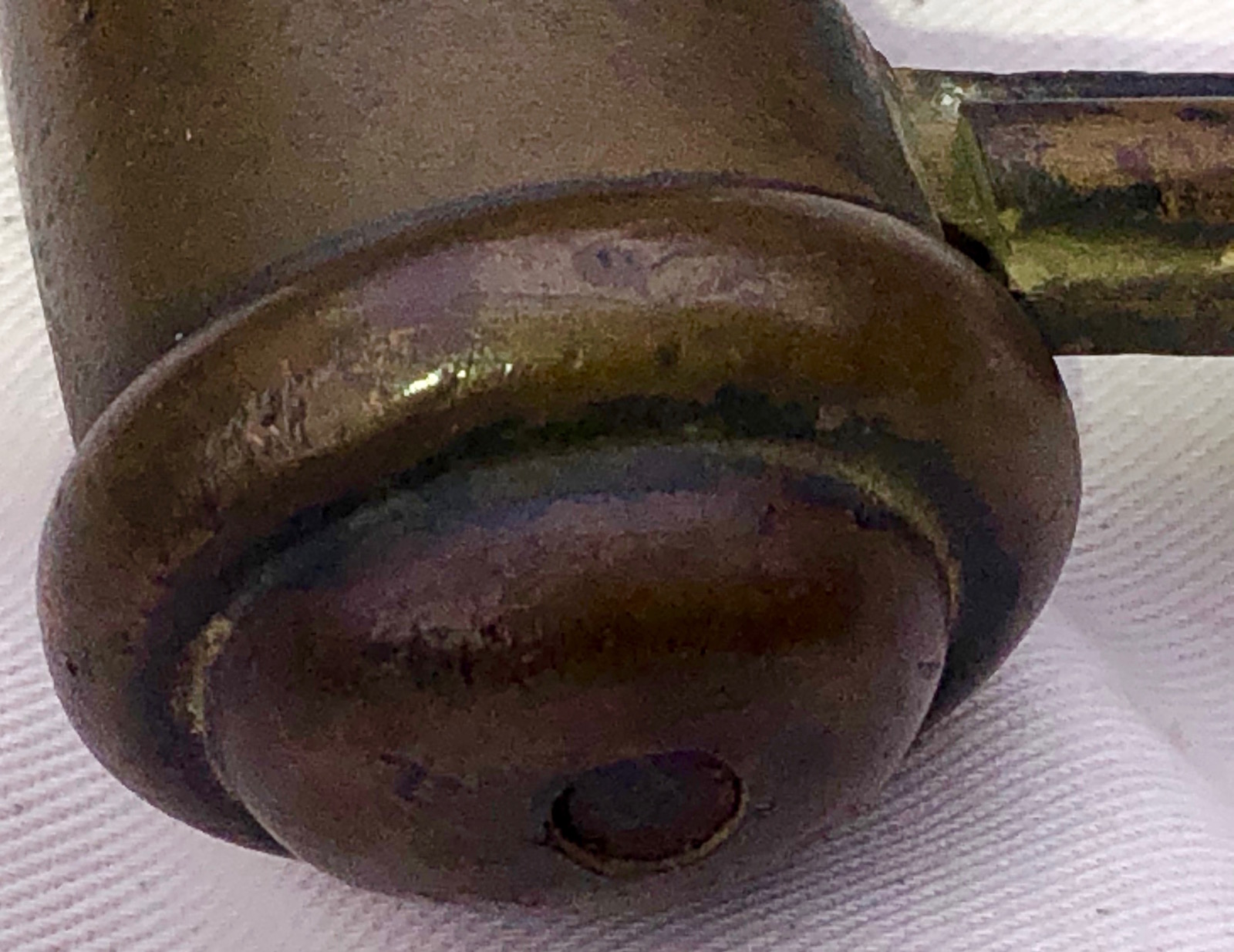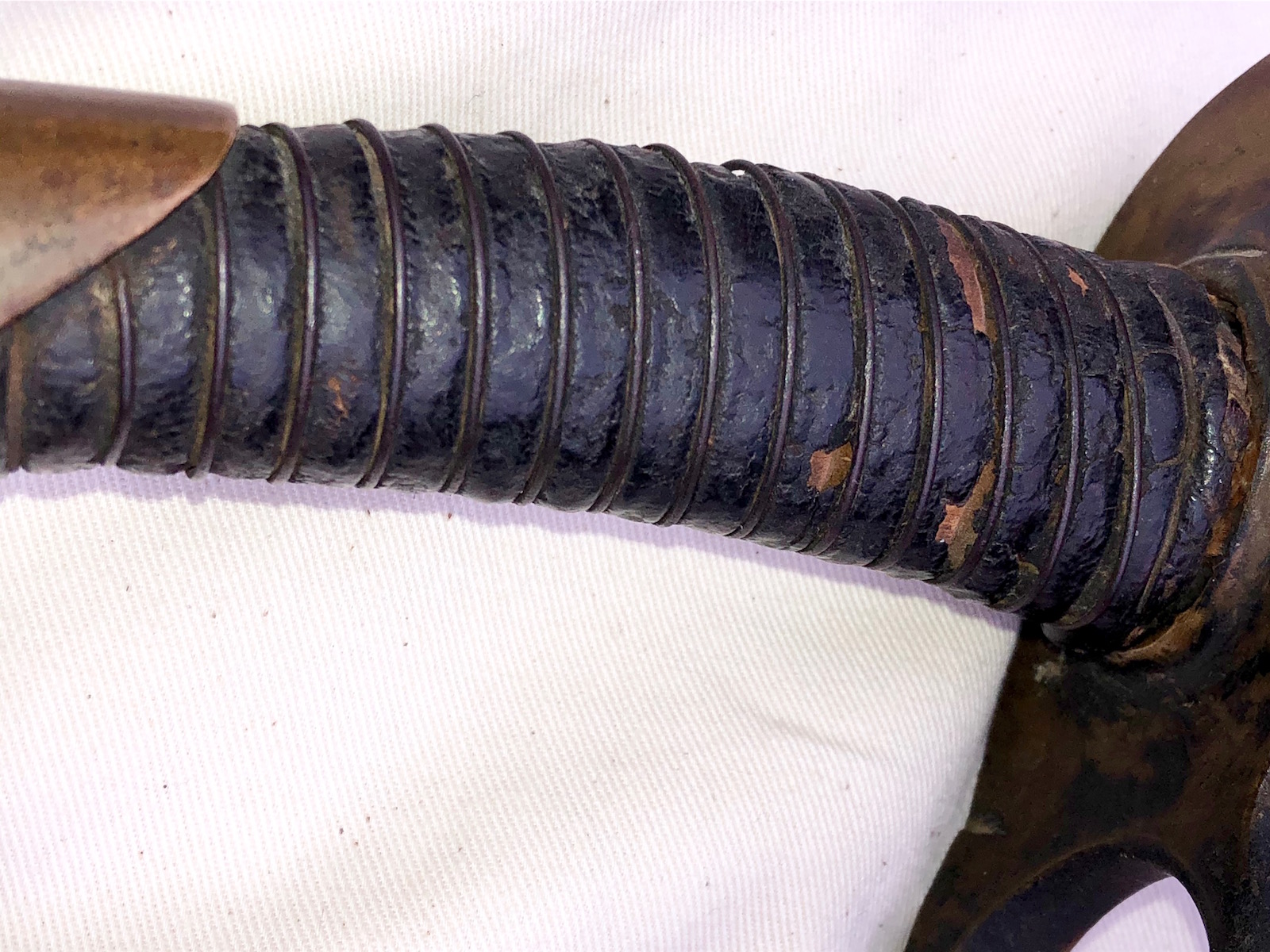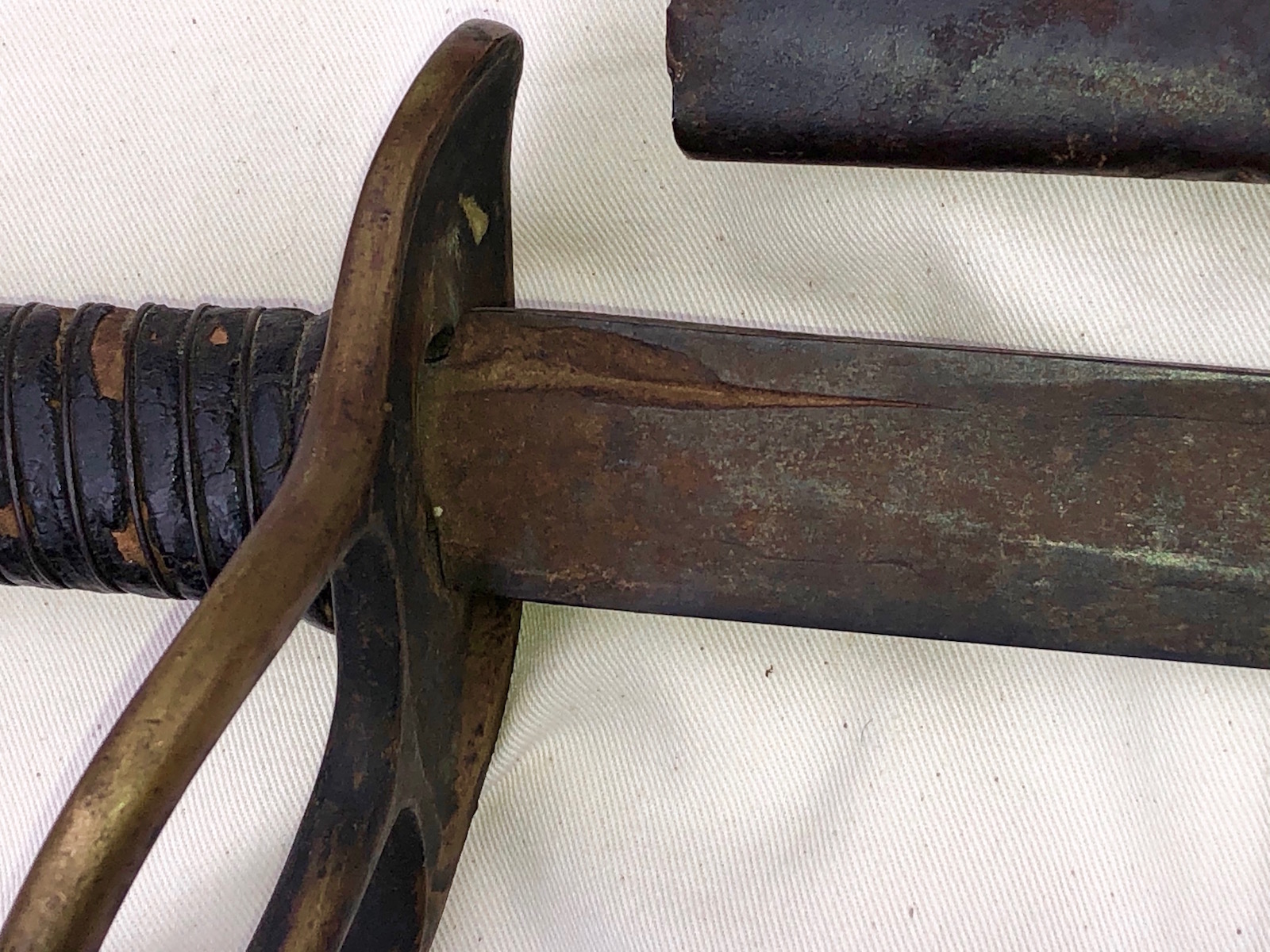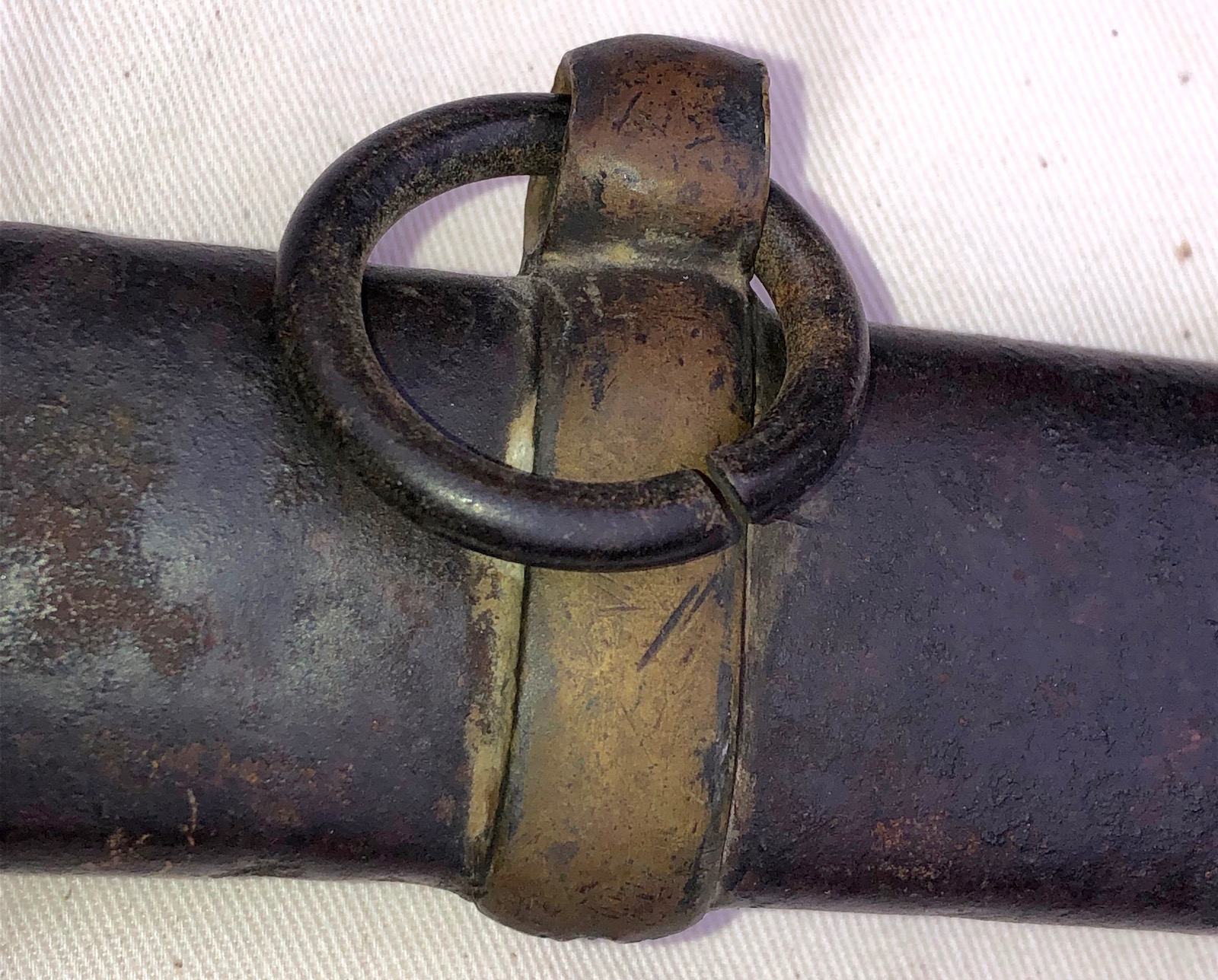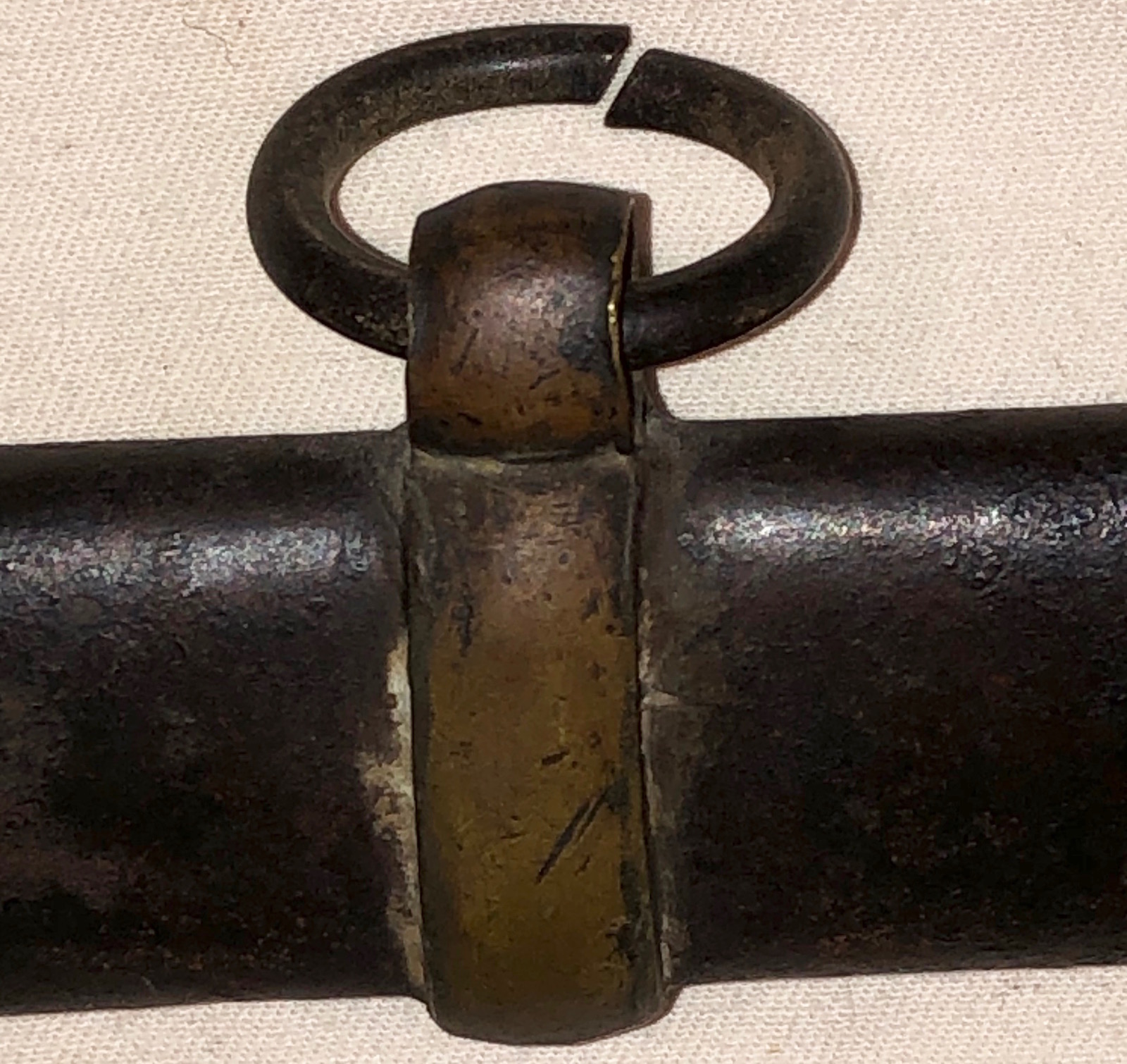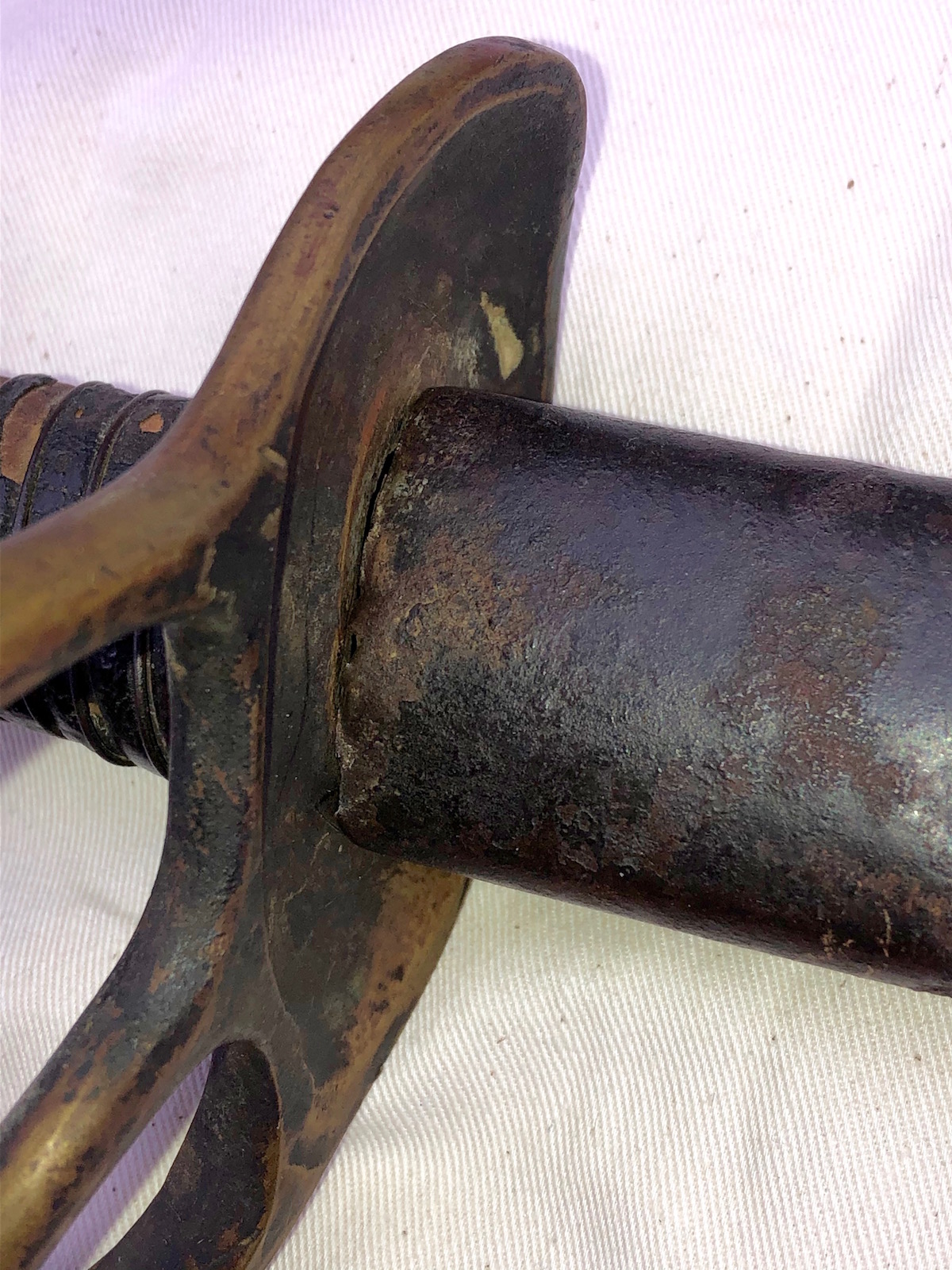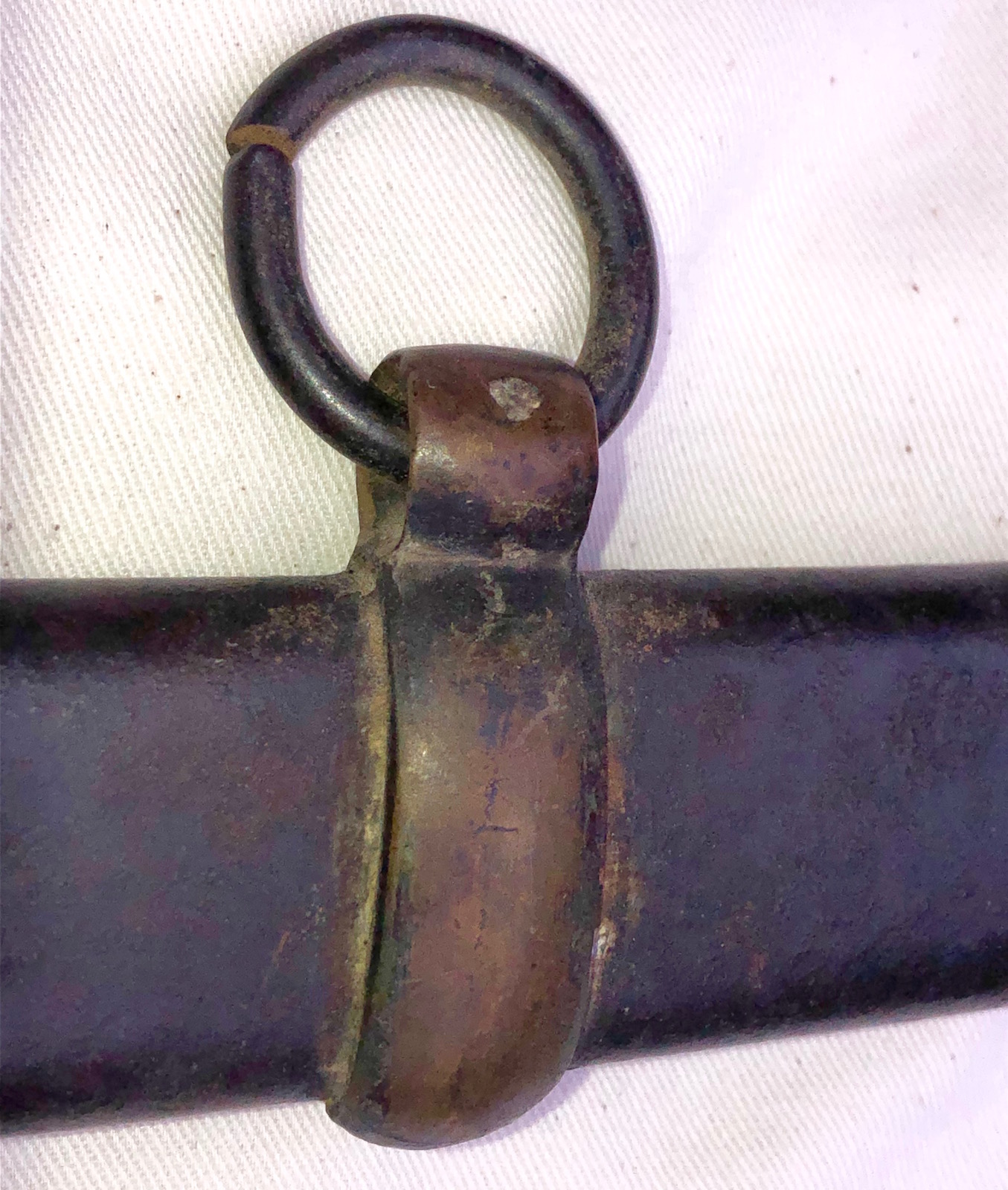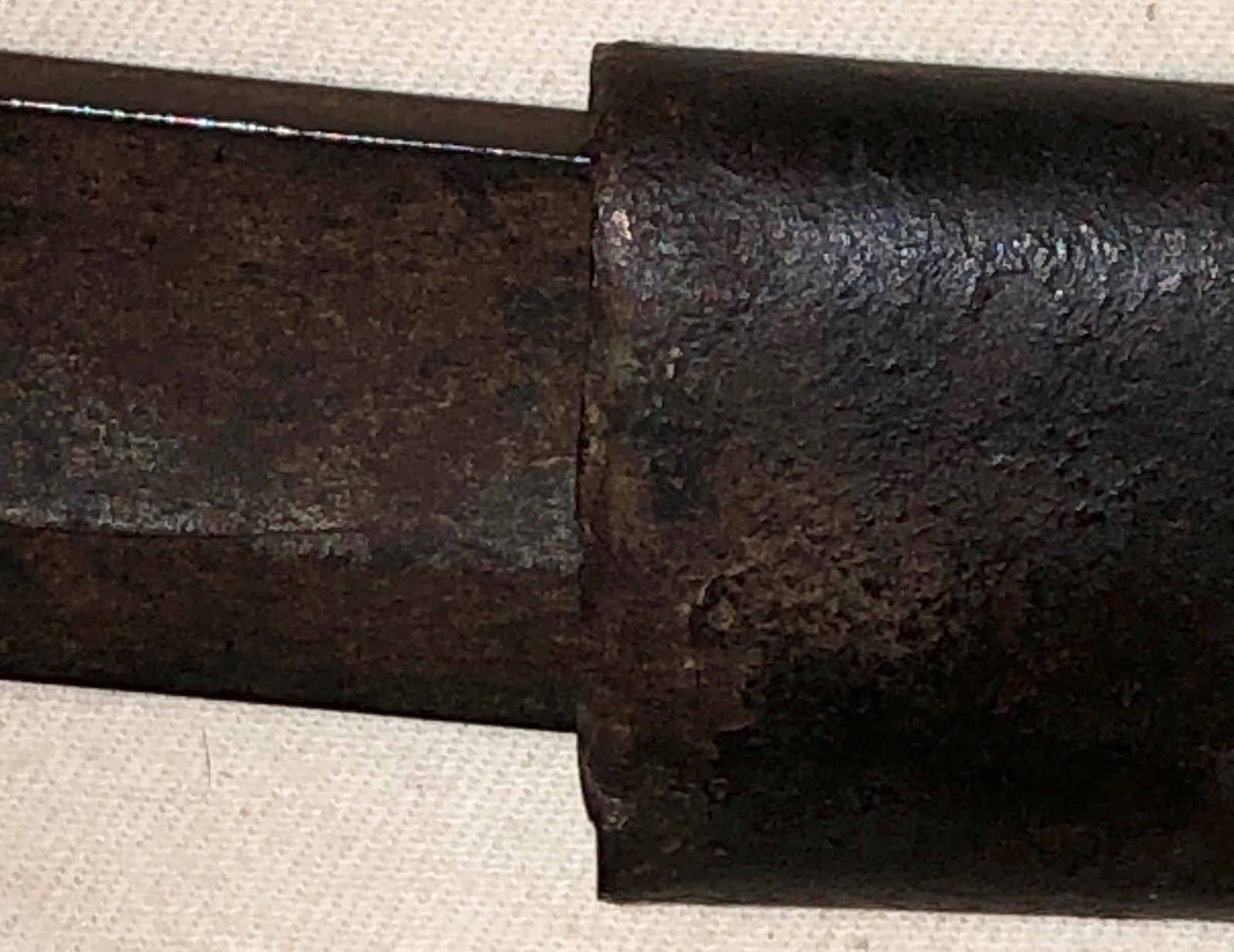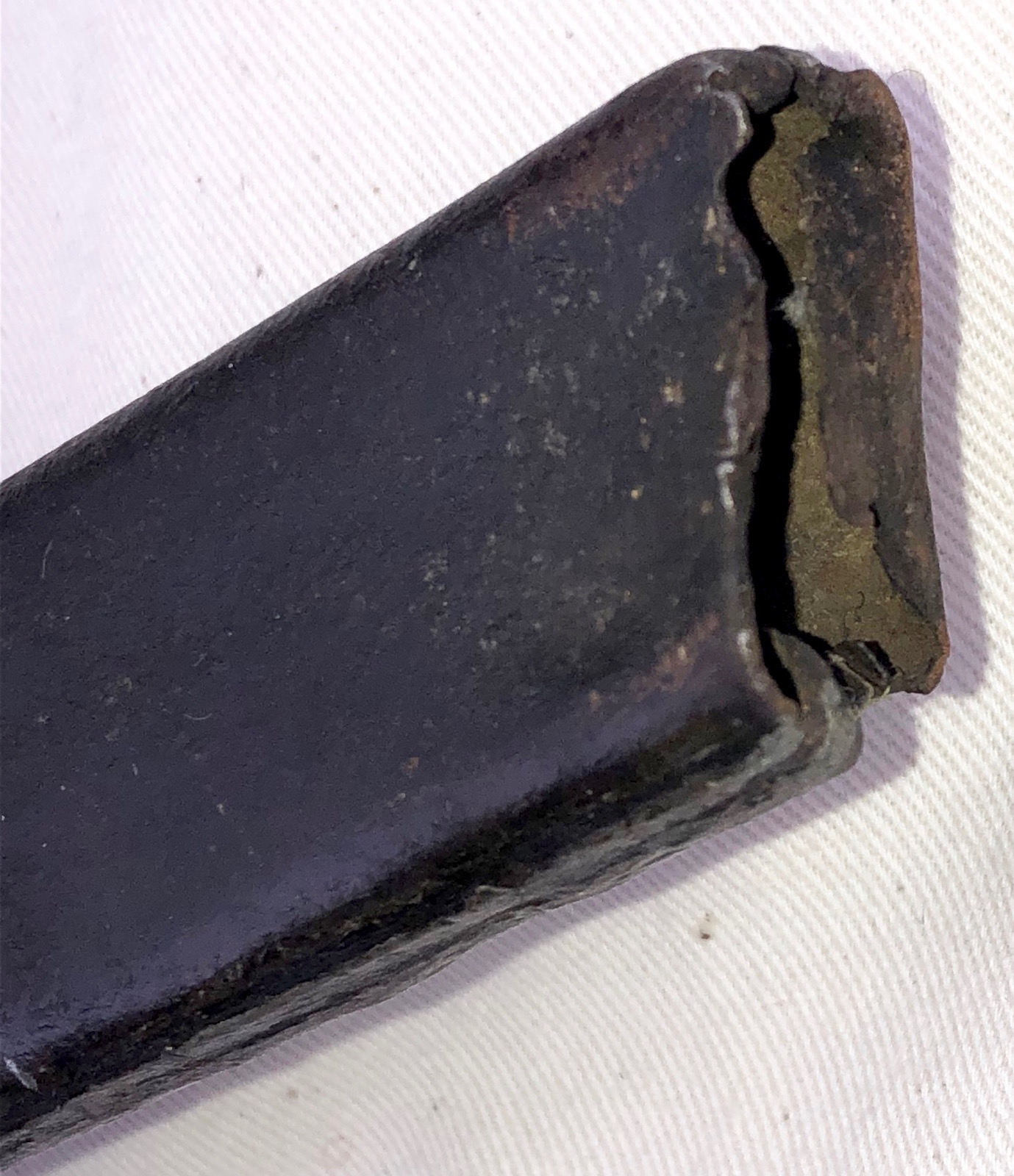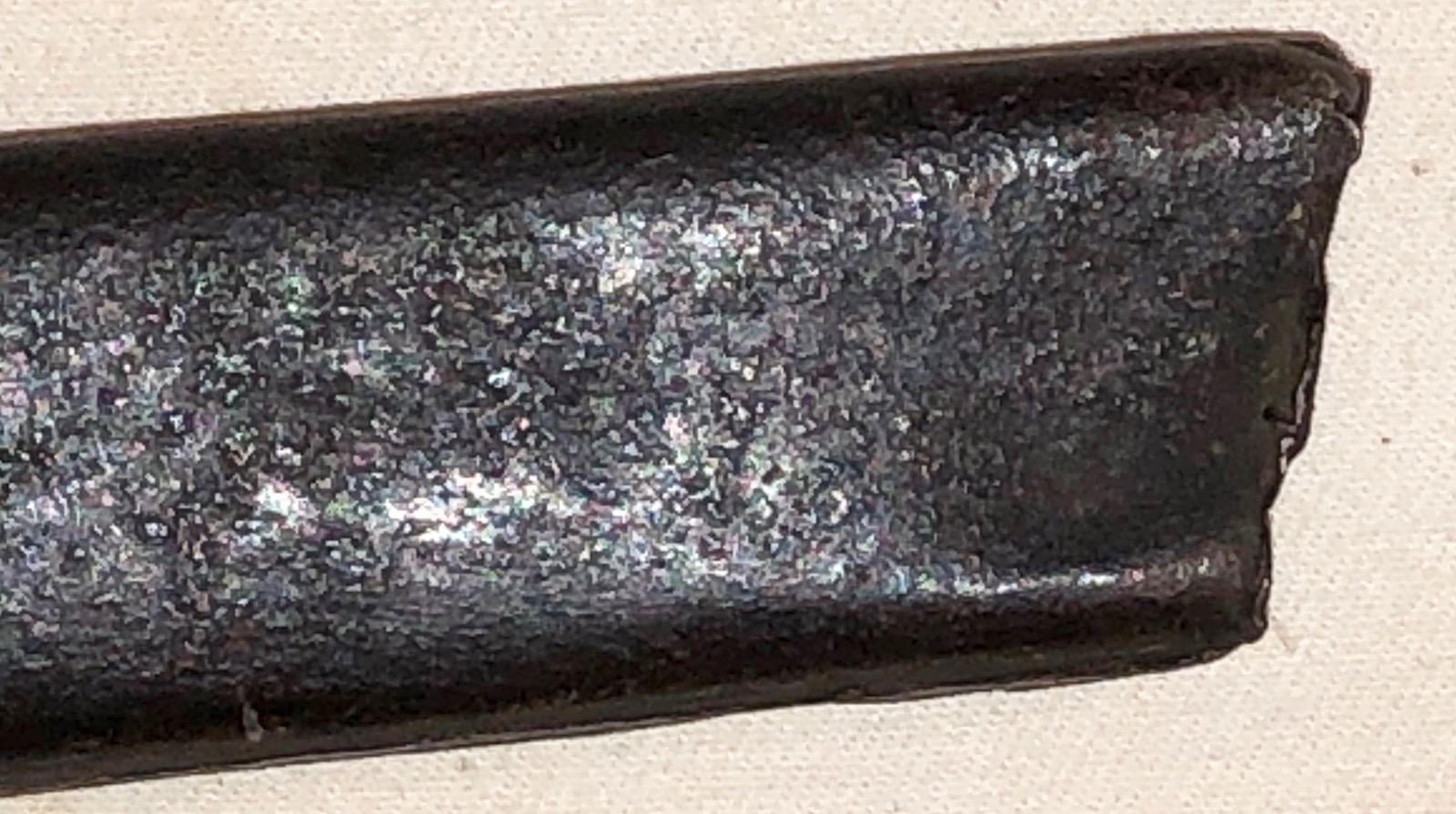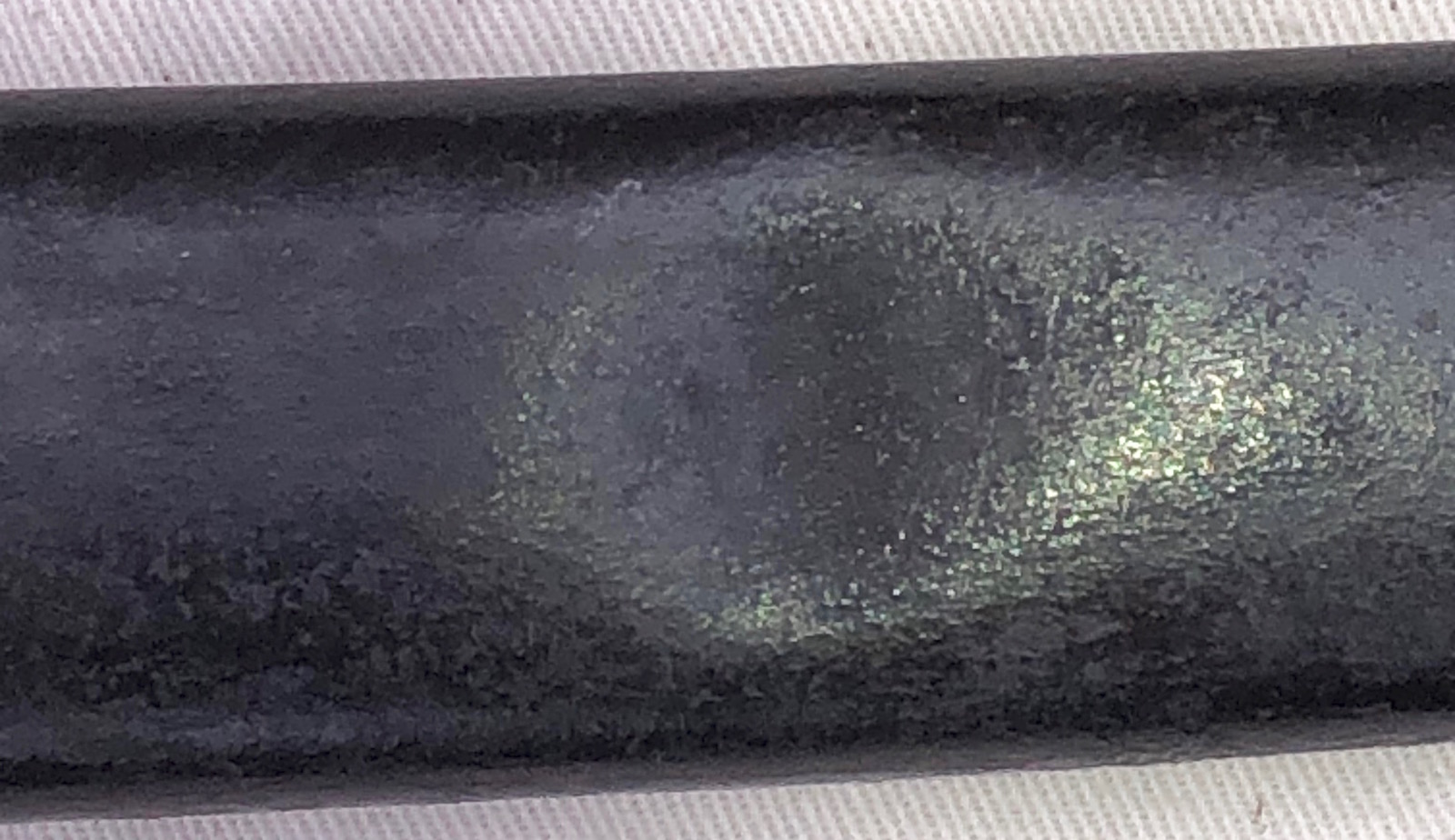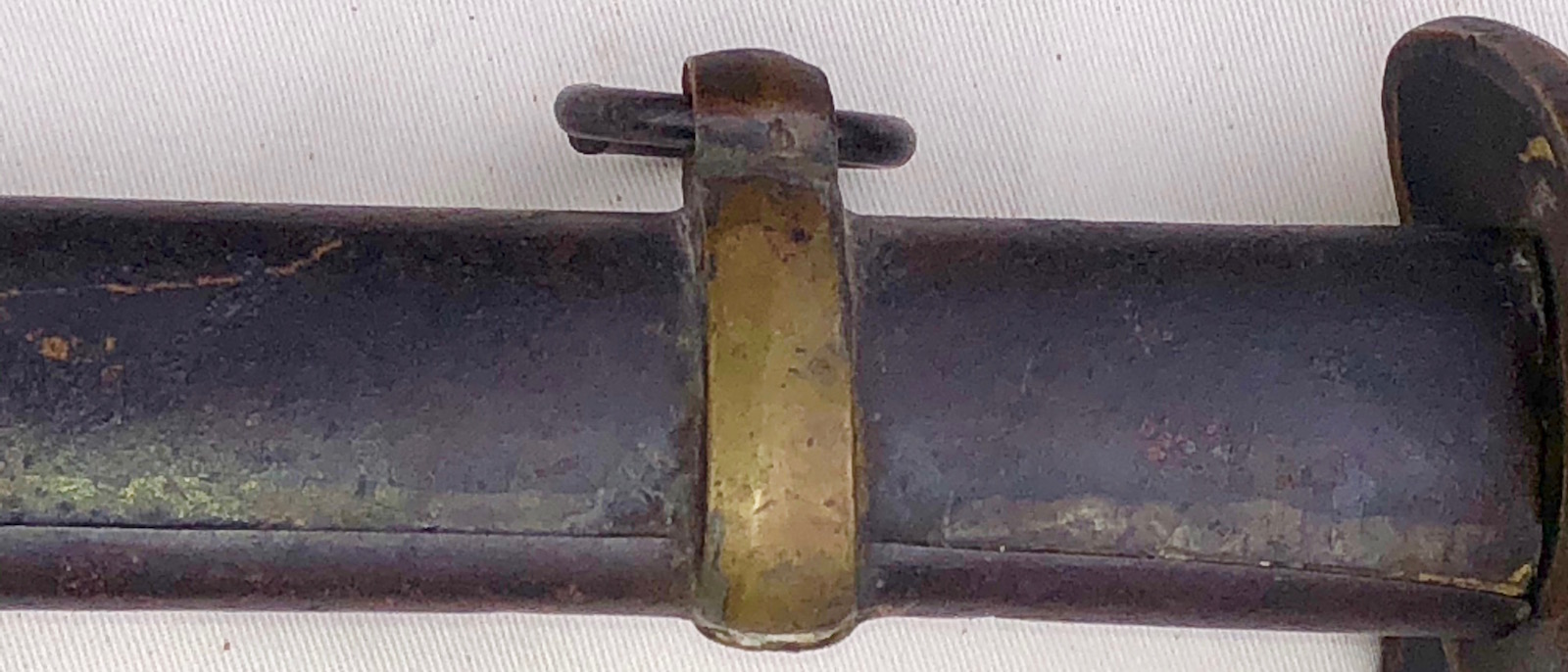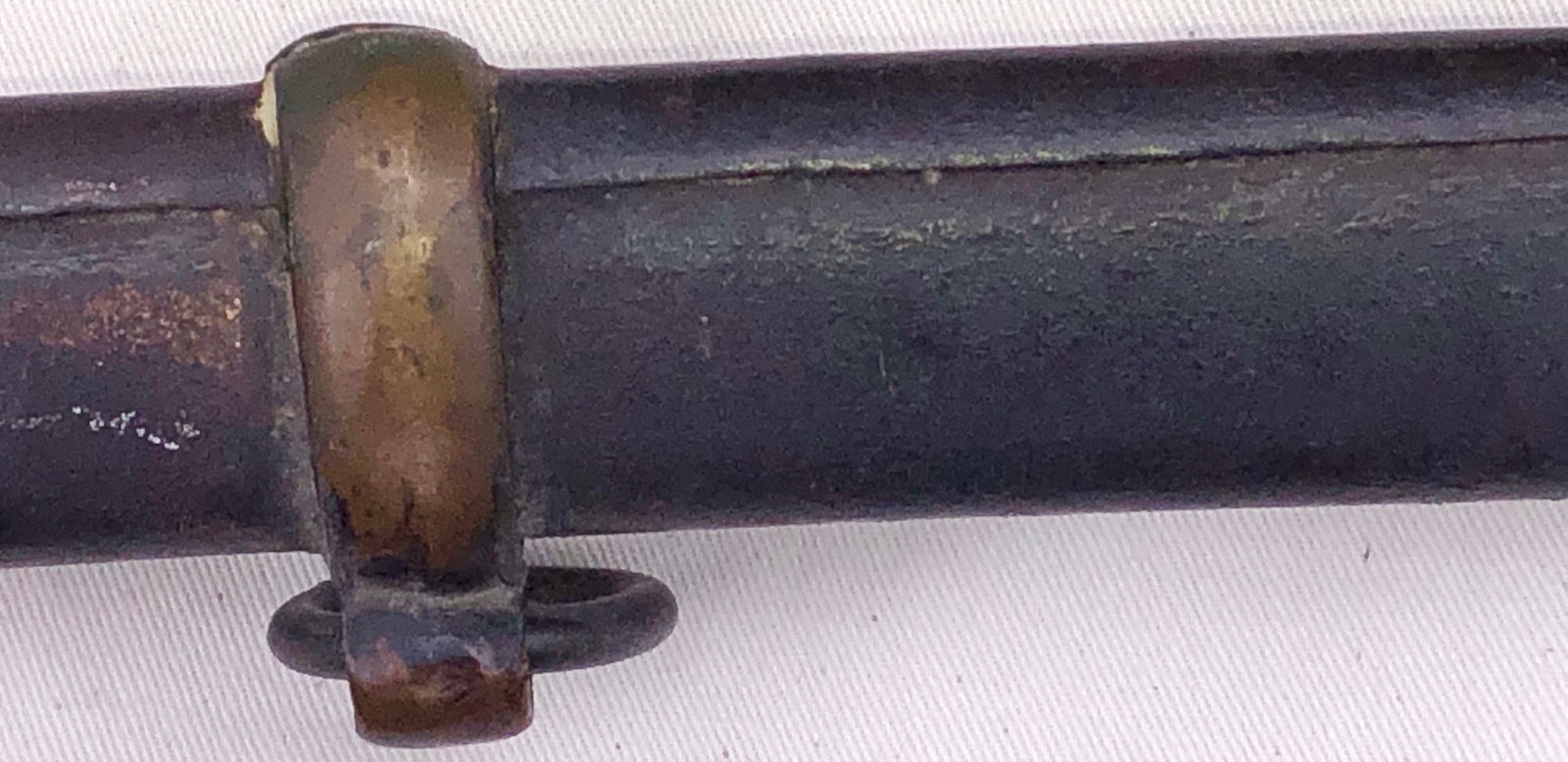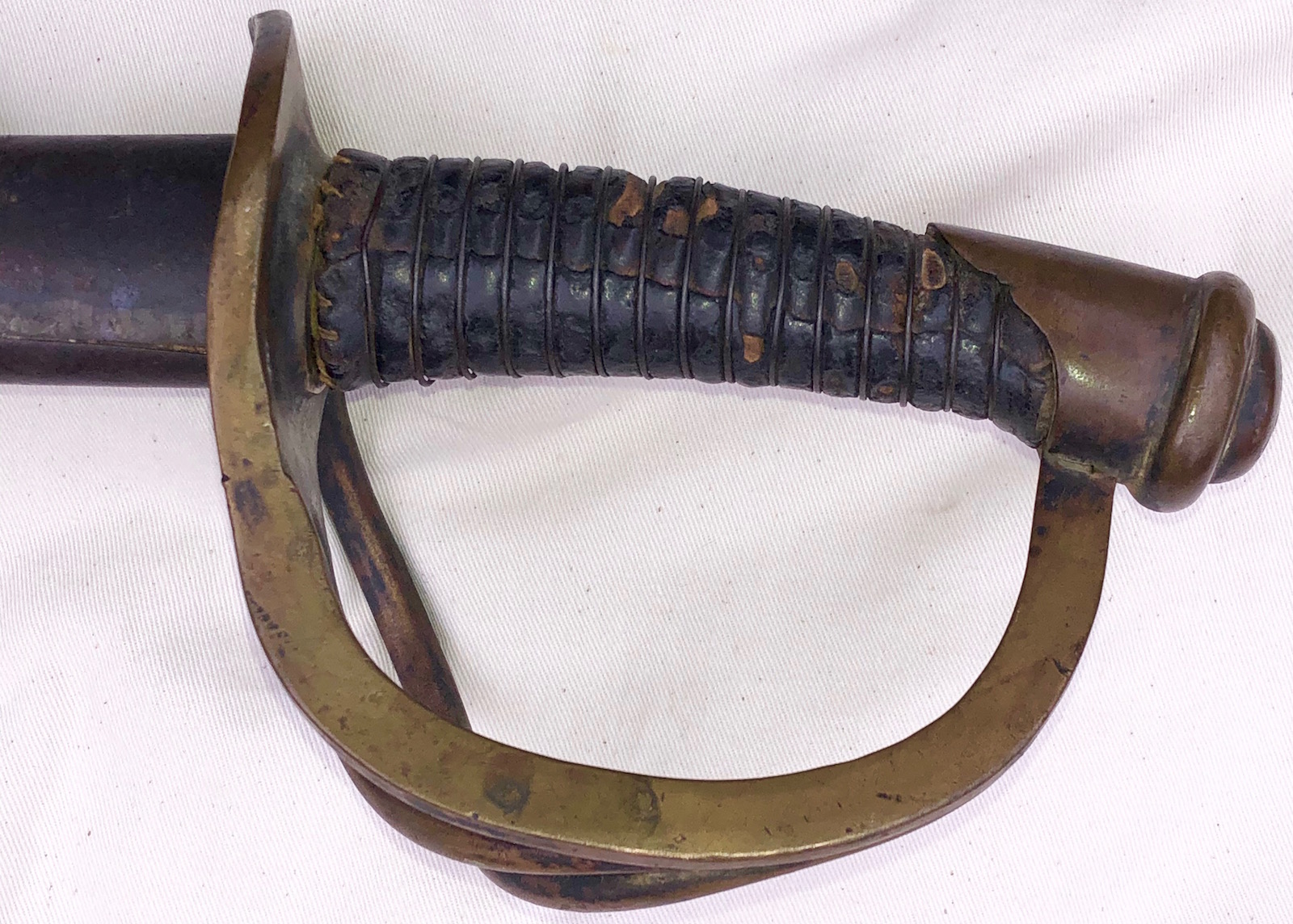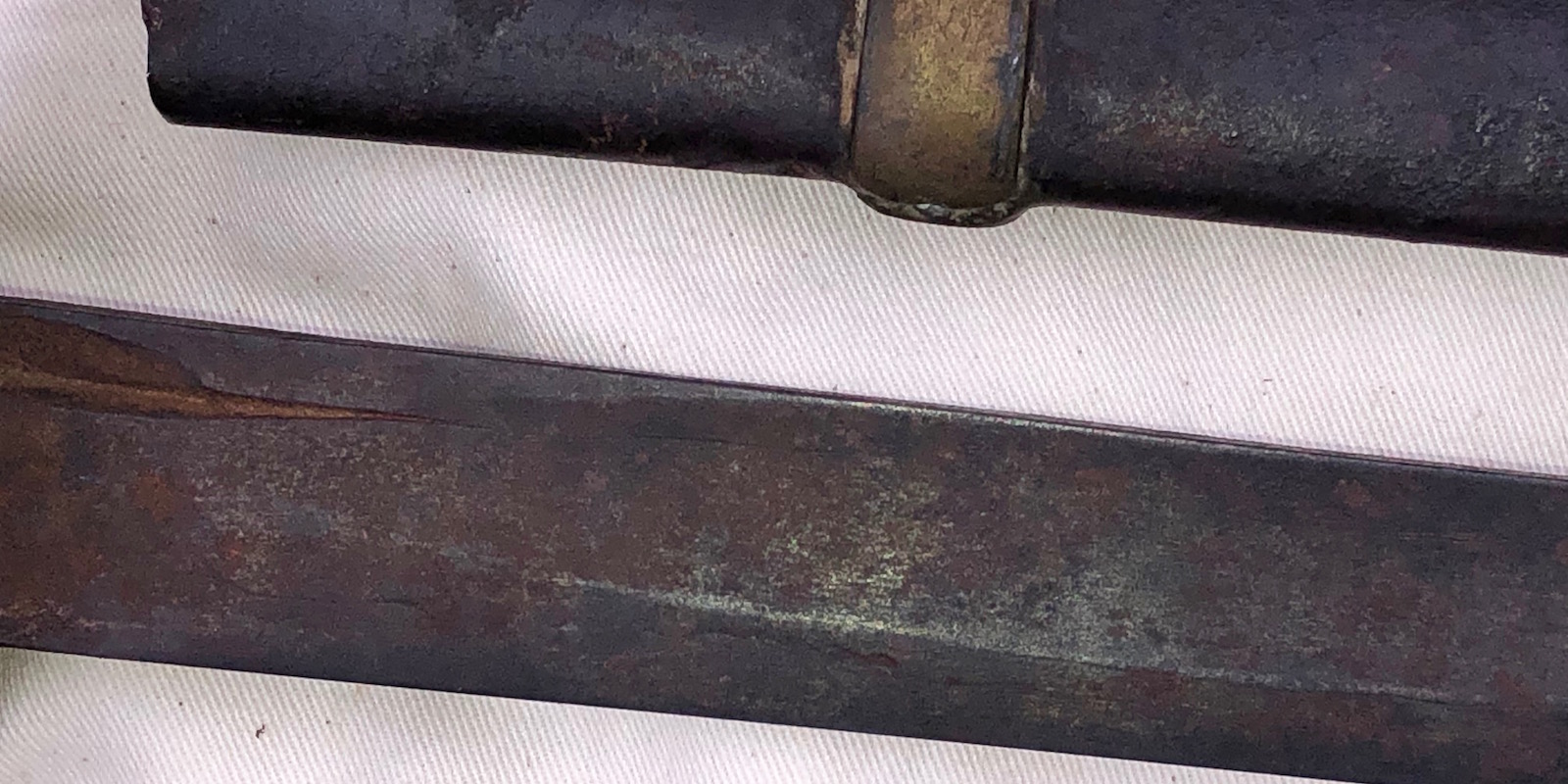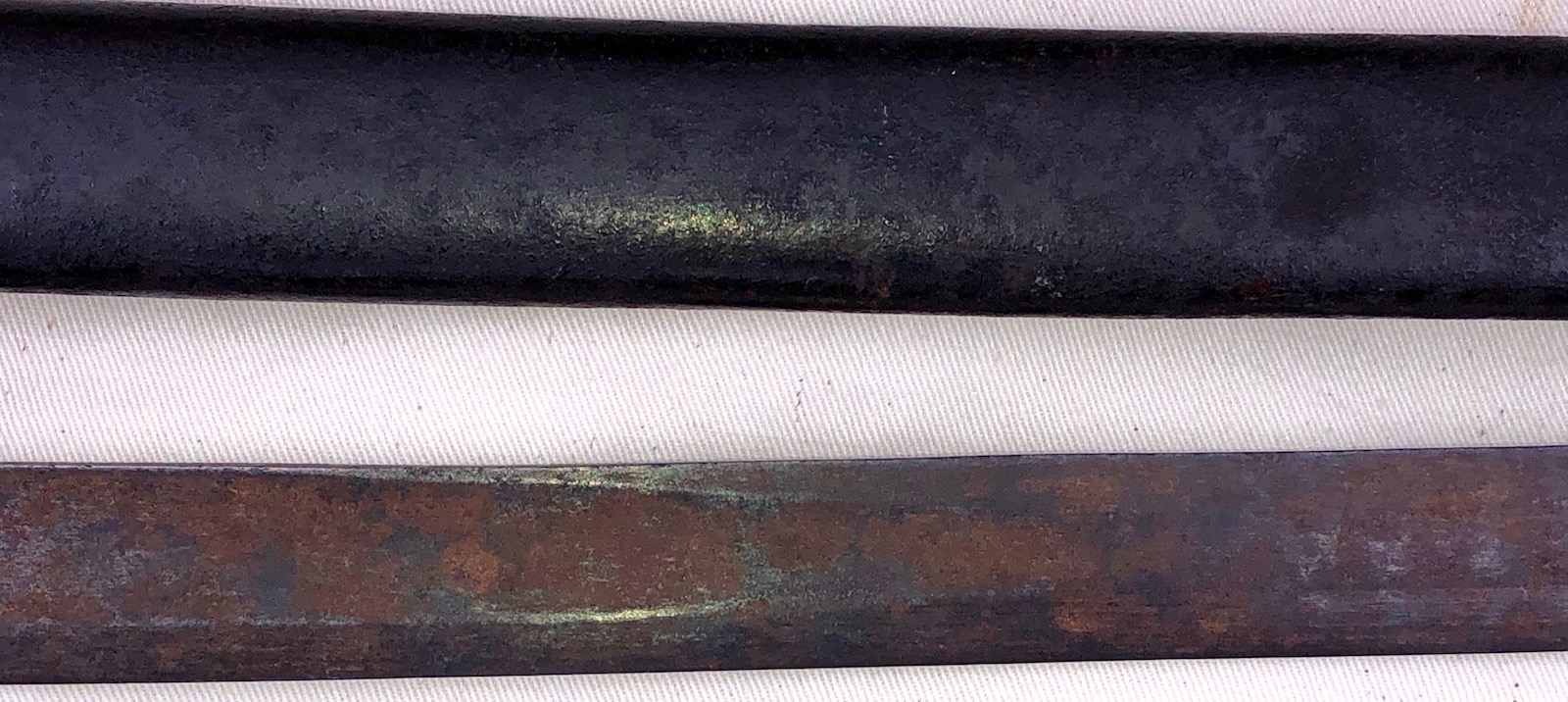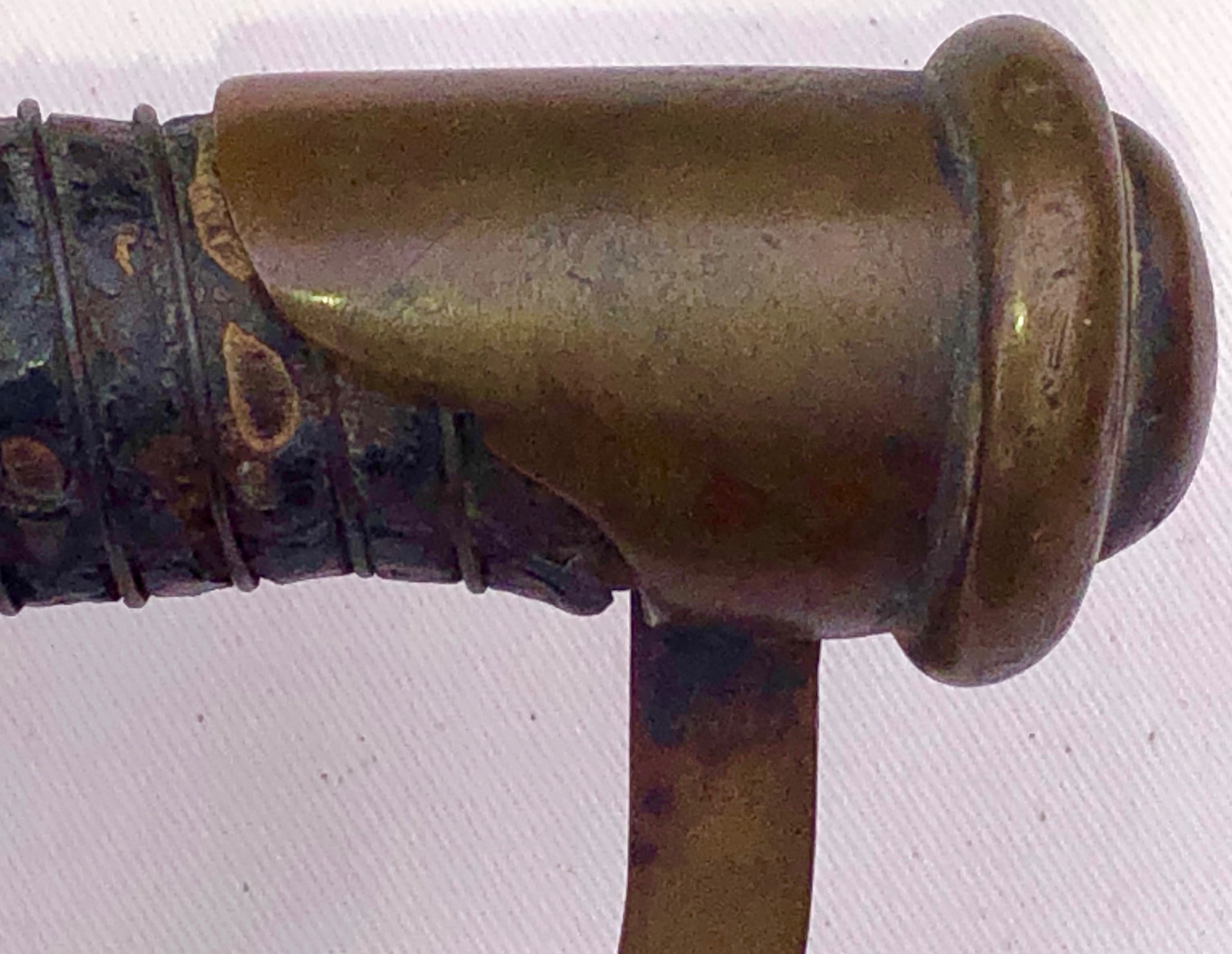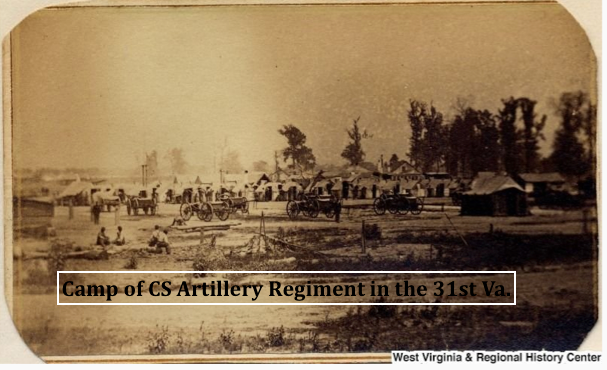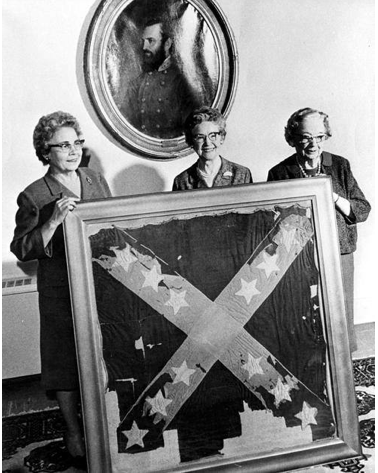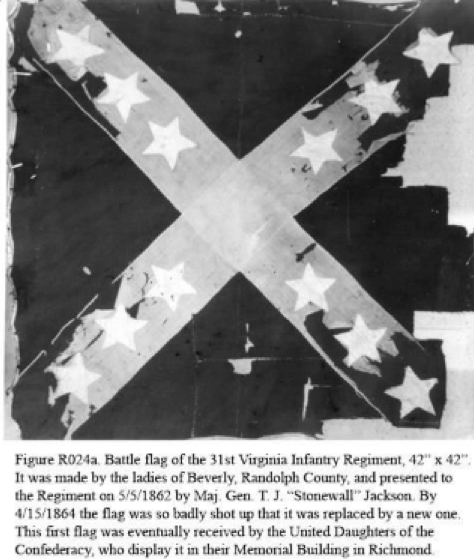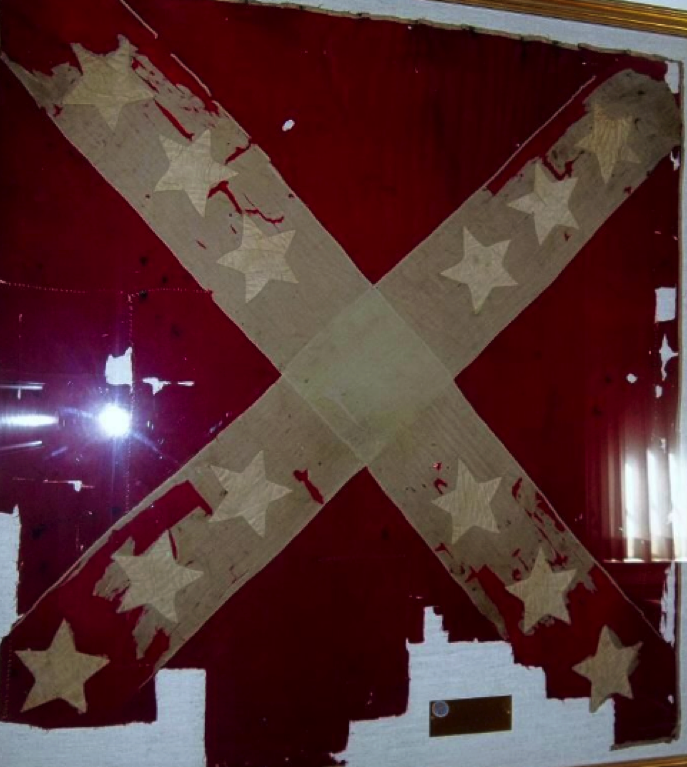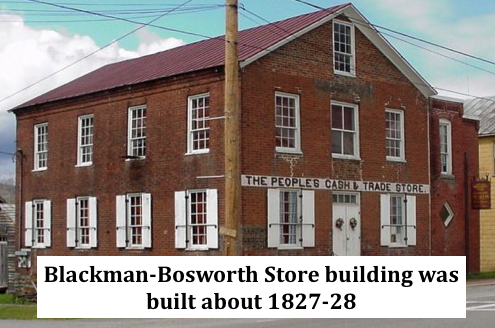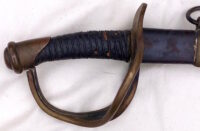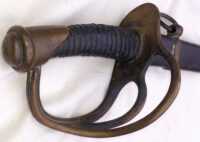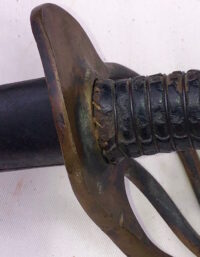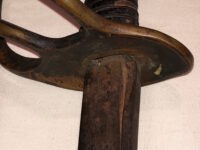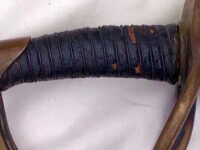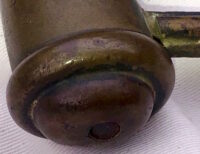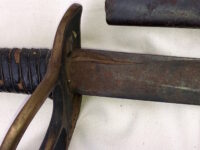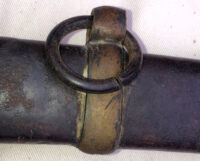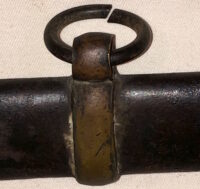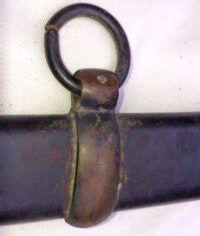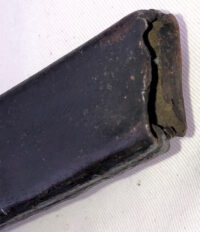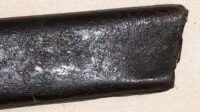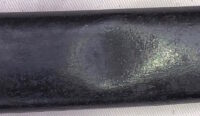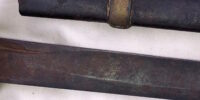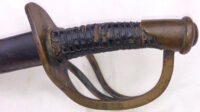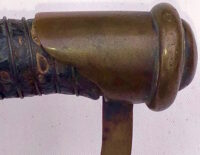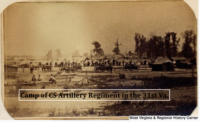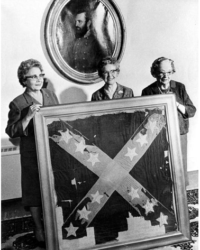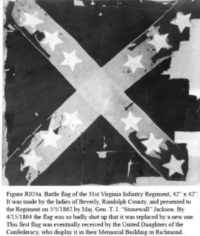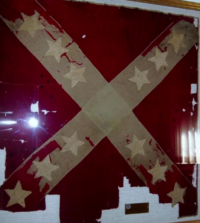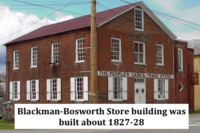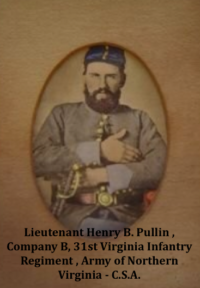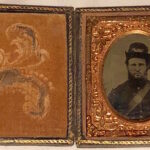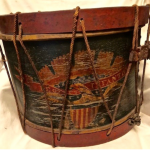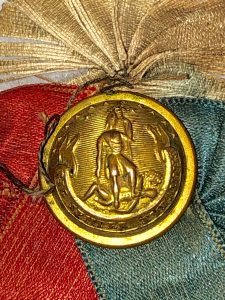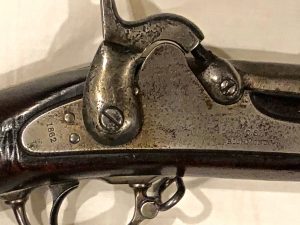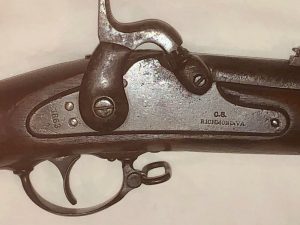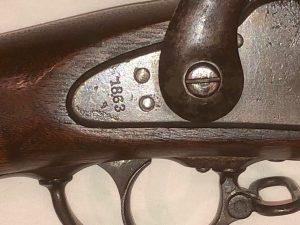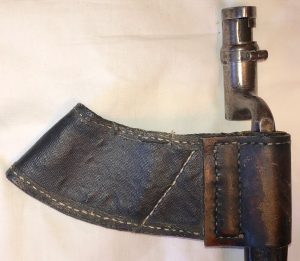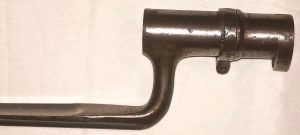Id’d Confederate Haiman Saber – 31st Virginia Infantry
SOLD
Id’d Confederate Haiman Saber – 31st Virginia Infantry – This Confederate saber and scabbard, products of the Columbus, Georgia based brothers, Louis and Elias Haiman, perhaps the most prolific of Confederate sword makers. This example of their work descended through members of a West Virginia family, from whom we obtained it. Both descendants that we worked with affirmed the provenance of the saber, as summarized by this statement sent to us: “ … according to my mother, it (the saber) came from the Bosworth side (of the family); there is a xerox copy of ‘Grandpapa Bosworth’s Civil War Diary’. This (diary) was that of Squire Newton Bosworth, my mother’s great grandfather. He was in Company F, 31st Virginia Regiment. It says he was wounded in the face in May 1864 and imprisoned in Point Lookout MD from 10/19/1864 to 2/14/1865. The date of this piece (transcription) is 7/31/1906. The date of the diary is 12/12/1863 to June 1864, and he apparently is in the CSA Roll of Honor.” Our research indicates that both S.N. Bosworth and his brother, John Woodbridge Bosworth, served in the 31st Virginia; S.N. was indeed wounded, in the face, at the Battle of Spotsylvania, in May of 1864; he recovered and would later be captured at the Battle of Cedar Creek, on October 19, 1864, then confined and ultimately escaping from the Union prison at Point Lookout, Maryland. John W. Bosworth would serve throughout most of the war, only to be captured at Ft. Stedman, during the latter part of the Siege of Petersburg, on March 31, 1865; he was confined at the Union prison at Ft. Delaware, Delaware, taking the Oath of Allegiance, in mid-June of 1865. Both brothers participated in numerous combat events with the 31st Va., a regiment organized from men predominantly from what was in 1861, part of southwestern Virginia, but became part of the state of West Virginia. The National Park Service synopsizes the war history of the 31st Va. as follows:
“31st Infantry Regiment was organized under W.L. Jackson and mustered into Confederate service in July, 1861. Many of its members were raised in Marion, Pendleton, and Gilmer counties. The unit was active in Lee’s Cheat Mountain Campaign and Jackson’s Valley operations. Later it was assigned to General Early’s, W. Smith’s, Pegram’s, and J.A. Walker’s Brigade, Army of Northern Virginia. The 31st participated in the difficult campaigns of the army from the Seven Days’ Battles to Cold Harbor, then moved with Early to the Shenandoah Valley and was active around Appomattox. This regiment reported 13 casualties at Greenbrier River, 37 at Camp Alleghany, 19 at McDowell, and 97 at Cross Keys and Port Republic. It lost 3 killed and 17 wounded at Cedar Mountain, had 5 killed and 20 wounded at Second Manassas, and suffered 1 killed and 7 wounded at Sharpsburg. Of the 267 in action at Gettysburg, ten percent were disabled. On April 9, 1865, it surrendered with 7 officers and 49 men of which 22 were armed. The field officers were Colonels John S. Hoffman, William L. Jackson, and Samuel H. Reynolds; Lieutenant Colonels Francis M. Boykin, Alfred H. Jackson, and J.S. Kerr McCutchen; and Majors James C. Arbogast, Joseph H. Chenoweth, and William P. Cooper.”
During the first two years of the war, the 31st Va. was under the command of General Stonewall Jackson. Jackson presented the 31st with their first flag, an Army of Northern Virginia battle flag. By the time of their participation in the Battle of Cedar Creek, in October of 1864, the flag was quite tattered and torn; according to an online article, authored by Greg Biggs, with material gleaned from the Bosworth Family Papers, 1862-1865, Accession 40489. 36 pages, in the Library of Virginia:
“Battle Flag of the 31st Virginia Infantry Regiment, C.S.A. Army of Northern Virginia. Made by the ladies of Beverly, home of Co. F, and presented to the regiment on May 5, 1862, by Gen T.J. “Stonewall” Jackson. The flag was in all of his battles except Chancellorsville. It was torn twice by shells, at Second Manassas and at Sharpsburg, where the color bearer, Sgt. “Al” Robinson was killed.
This was the first clue we had that these ANV cotton/wool flags were made by a sewing circle. Again they made them for three brigades and the 31st VA was part of Elzey’s at the time. By Sharpsburg they were in Early’s Brigade of Ewell’s Division – later Smith’s Brigade of Early’s Division at Gettysburg. All the flags of this issue are very uniform in manufacture and materials.
After Sharpsburg, however, the brigades of this division received new ANV Third Wool Bunting battle flags made by the Richmond Depot (as did many other units of the army). Where some were marked with attached cloth bearing unit designations or battle honors, these flags, based on extant evidence, were not marked in any way according to flags historian Howard Madaus.
Thus, the flag at the UDC was replaced by a newer, and 13 starred, battle flag for use at Fredericksburg and into 1864. This flag has not been located as of today, however. The ANV received numerous brigade level flag issues in the Fall of 1862 and starting in 1863, full divisional issues for four of the army’s divisions (DH Hill, AP Hill, Pickett’s and after Gettysburg, Ed Johnson’s). Mass production of flags from the Richmond Depot made this possible and the era of ladies making flags closed (although ladies worked at the depot – some 2000 or more in late 1862).
Mrs. Rebecca Bosworth See rode into camp after a battle to visit her husband of the 5th Virginia and her brothers, S.N. and J.W. Bosworth, of Co. F, 31st Virginia. After seeing the tattered condition of the ensign, she decided to make a new one. She gathered material and returned to her Augusta County home. Her new flag was presented to the regiment on the evening of April 15, 1864, at a dress parade in Camp Somerville, where her letter to Col. John S. Hoffman, along with his reply, were read to the regiment. Col. Hoffman gave Mrs. See the old flag, and she gave it to S.N. Bosworth after the war.
Much UDC flag history is highly suspect unfortunately and we may be talking about two different flags here. The flag that might have been replaced in 1864 would have been the 13 star ANV Third Bunting issue, which replaced the flag at the UDC in the Fall of 1862.”
The ANV flag that was presented to Mrs. See, she, in turn, after the war ended, gave it to her brother, S. N. Bosworth. Indeed, the two family members, from whom we obtained the Haiman saber, recounted the following:
“I suspect it (the saber) came from one of my mother’s aunts who lived in Elkins WV, our hometown. Her name was Margauritte Downing, and she had an actual Confederate battle flag, with holes, blood and tatters which was framed and subsequently donated to VMI (I think). I do remember the sword being in our homes in Michigan and Ohio before my mom and dad came to Lynchburg. I’ll check with my brothers….my brother also remembers that the sword came from my mother’s aunt, Mrs. B.C. Downing. He recalls that the sword hung underneath the aforementioned battle flag…My great aunt Margarette (Mrs. BC Downing, who owned the sword), was one of the four daughters of Elam Dowden Talbott. He was a lawyer and state legislator in WV. My grandfather, W.D. Talbott, was Elam’s only son. In searching Elam Dowden Talbott, it appears that his father was Wm. Woodford Talbott. I just found a description of the sword done by my mother who attributes the sword to the Bosworth side of her family not the Talbott side. Lutie Lee Bosworth (daughter of Squire N. Bosworth, 31st Va. Infantry) was my mother’s grandmother and married Elam.”
With research, we know that the tattered and battle worn flag of the 31st Va., given to S.N. Bosworth by his sister, just after the cessation of hostilities, was ultimately donated to the United Daughters of the Confederacy, in a period frame. We have added images of this flag when it was initially donated to the UDC, as well as some more recent images. The flag is no longer in existence, as it was destroyed during the summer tumult of 2020, when a fire was started inside the UDC Headquarters in Richmond.
The provenance and ancestral lineage of this saber is ironclad; we will supply a complete chain of ancestry, from original ownership by the Bosworth brothers to today, as well as a signed affidavit corroborating this provenance.
The saber remains in overall fair to good condition; we have chosen not to clean or do any restoration, whatsoever, thereby leaving it just as it has been since being brought home by the Bosworth brothers. The grip remains in good condition, with about 95% of the original, typical Haiman, black painted, cloth wrap and single strand of iron wire. There are traces of Confederate, black paint on the brass guard and pommel cap; as is often the case with these sabers, the hilt wobbles a bit. The blade exhibits the usually encountered Haiman, long tapered, unstopped fuller and the characteristically distinctive, horizontal “flaw” at the ricasso ; the blade is missing the leather washer at the juncture of the tang and hilt and has some mild surface rust. The scabbard is also a typical Haiman product, with a soldered lap seam, brass sword mounts and somewhat crude iron mount rings; missing is the original brass scabbard throat. The scabbard has a dimpled ding, that could possibly be indicative of being bullet struck; the drag has been torn off the saber, another indication of enduring the rigors of serious combat. This is a great example of a Confederate saber, with an impressive war record and confirmed provenance.
Measurements: Overall length (saber + scabbard): approx. 43.75”; Overall length (saber only): 42”; Blade length: approx. 35.75”
Squire Newton Bosworth
| Residence Beverly VA; a 19 year-old Deputy County Clerk. Enlisted on 3/10/1862 at Huntersville, VA as a Private. On 3/10/1862 he mustered into “F” Co. VA 31st Infantry (date and method of discharge not given) He was listed as: * On rolls 7/15/1862 (place not stated) * Issued clothing 11/14/1862 (place not stated) * On rolls 11/15/1862 (place not stated) * Issued clothing 7/30/1863 (place not stated) * Issued clothing 2/19/1864 (place not stated) * Wounded 5/12/1864 Spotsylvania Court House, VA (Wounded in right side of face) * Confined 5/13/1864 Waynesboro, VA * Hospitalized 5/14/1864 Chimborazo Hospl, Richmond, VA * On rolls 8/31/1864 (place not stated) * POW 10/19/1864 Cedar Creek, VA * Confined 10/25/1864 Harper’s Ferry, WV * Confined 10/29/1864 Point Lookout, MD * Escaped 2/14/1865 (place not stated) (Escaped in exchange under assumed name) * Paroled 4/20/1865 Mt Jackson, VA * Oath Allegiance 4/22/1865 Winchester, VA * Transferred 4/22/1865 Beverly, WV Promotions: * Fifer * Sergt He was described at enlistment as: 5′ 5.0″, fair complexion, blue eyes, brown hair Other Information: born in Beverly, VA died 2/10/1922 Buried: Beverly, WV Cemetery After the War he lived in Beverly, VA |
A More Complete History of Beverly
The 1800’s: Heyday of a Town
Construction within the town grew as the needs of the citizens expanded. The town was the political center of the new county and soon served as the commercial center as more families settled in the Tygart River valley. The two-story, log courthouse, which had been completed in 1789, was unsatisfactory and a committee was appointed in 1808 to build a new courthouse and jail. The courthouse was completed in 1815. The new jail was begun in 1813 and sat on the public square. In 1841, a new and larger jail building was completed on Walnut Street.
The Blackman-Bosworth Store building on Main Street is said to be the first brick commercial building west of the Allegheny Mountains. It started life as David Blackman’s store when it was built primarily with slave labor in 1827. Squire Newton Bosworth, son of Dr. Squire Bosworth, bought the store building in 1881 and in the 1890’s he added the additions on the north side of the building. S.N. Bosworth was born in 1841 and married- Florence A. Brown in 1867. They had nine children. Squire N. served in the Confederate Army as a Sergeant in the Thirty-First Virginia Infantry. He also served for many years as Post Master of Beverly.
No history of Beverly is complete without speaking of Doctor Squire Bosworth. He was long known as the “Patriarch of Beverly”. Joshua Bosworth was the first of the family to settle in West Virginia. Joshua married Rebecca Squire in Massachusetts and relocated to West Virginia. Joshua and Rebecca had five children of which one was Dr. Squire Bosworth. Squire was born in Montgomery, Massachusetts in 1785 and died at Beverly in 1870. He married Hannah Buckey in 1816 and they also had five children. Dr. Squire was for nearly fifty years the only doctor in Randolph County. He was a graduate of Williams College in Massachusetts and studied medicine in Richmond, Va. He studied medicine in Beverly under the tutelage of Doctor Dolbeare and attended lectures in Richmond, Va. He taught school for a time in Parkersburg as well as Beverly. He was involved with the Presbyterian Church; clerk of the county court of Randolph; deputy under Archibald Earle; and represented Randolph and Tucker counties in the Virginia assembly prior to the Civil War. Ten of Squire Bosworth’s descendants became doctors.
31st VA Infantry
| Organized: on 6/15/61 Mustered Out: 4/9/65 at Appomattox Court HouseOfficers Killed or Mortally Wounded: 14 |
| From | To | Brigade | Division | Corps | Army | Comment |
| Sep ’61 | Nov ’61 | 1st | Army of Northwest | |||
| Nov ’61 | Jan ’62 | Johnson’s | Jackson’s | Army of Northwest | ||
| Mar ’62 | Mar ’62 | Army of Northwest | ||||
| May ’62 | May ’62 | Conner’s | Army of Northwest | |||
| May ’62 | Jun ’62 | Elzey’s | Ewell’s | Valley District | Dept of Northern Virginia | |
| Jun ’62 | Apr ’63 | Elzey’s/Early’s/Smith’s | Ewell’s/Early’s | 2nd | Army of Northern Virginia | |
| Apr ’63 | Jun ’63 | Northwestern Virginia | Dept of Northern Virginia | |||
| Jun ’63 | Oct ’63 | Smith’s | Early’s/Ramseur’s | 2nd | Army of Northern Virginia | |
| Oct ’63 | Jun ’64 | Pegram’s | Early’s/Ramseur’s | 2nd | Army of Northern Virginia | |
| Jun ’64 | Dec ’64 | Pegram’s | Ramseur’s/Pegram’s | Valley District | Dept of Northern Virginia | |
| Dec ’64 | Apr ’65 | Pegram’s/Walker’s | Pegram’s | 2nd | Army of Northern Virginia |
Squire Newton Bosworth
| BIRTH | 5 May 1841 |
| DEATH | 10 Feb 1922 (aged 80) |
| BURIAL | Beverly Cemetery
Beverly, Randolph County, West Virginia, USA |
Squire Newton Bosworth was the son of a well-known local doctor and married to Florence A (Brown) Bosworth. He was a member of the 31st Virginia Infantry during the Civil War. He came into possession of the Bosworth Store Building, the Beverly Museum and a National Registry Historic site, in 1881. It was known as S N Bosworths’ Cheap Cash Store. He operated the store into the twentieth century and in the late 1920’s it closed its doors and became a storehouse. It now serves as a meeting house and museum.
| ATH | 10 Feb 1922 (aged 80) |
| Beverly Cemetery
Beverly, Randolph County, West Virginia, USA |
Family Members
Spouse
Florence Amelia Brown Bosworth
1845–1928
Children
Lucy Lee Bosworth Talbott
1868–1956
Mary Evelyn Bosworth Talbott
1870–1956
Florence Bradford Bosworth
1878–1899
Carroll Luster Bosworth
1881–1958
1887–1984
Bosworth family. Papers, 1862-1865.
Accession 40489. 36 pages.
Library of Virginia
Papers, 1862-1865, of the Bosworth family of Randolph County, (West) Virginia, consisting of letters written to and from Squire Newton Bosworth (1841-1922) while he was serving in the 31st Virginia Infantry during the Civil War. There are also letters written to and from his father Dr. Squire Bosworth (1792-1870). Subjects of the letters written by Squire Newton Bosworth include his opinions of deserters, news of fellow soldiers and residents of Randolph County, troop movements, and the activities of his father. Topics of the other letters written to him and his father include family news, religion, the family’s sympathy with Squire Bosworth and his brother John Woodbridge Bosworth (1836-1936) after they were captured by Union soldiers, and their efforts to send books, clothing and money to them. Also included in this collection is a forage receipt, as well as poetry written by Squire Bosworth while being held in prison.
A GUIDE TO THE SQUIRE BOSWORTH PAPERS, 1848-1892
A COLLECTION IN
SPECIAL COLLECTIONS
COLLECTION NUMBER MS2010-060
Virginia Tech Library
Squire Bosworth, the son of Joshua Bosworth, was born in Montgomery, Massachusetts in 1785. He moved with his family to what is northwestern Virginia (now West Virginia) while still young. After teaching school in Parkersburg and Beverly, Bosworth studied medicine under a Dr. Dolbear and established his practice in Beverly. He served for a time as Randolph County court clerk and as deputy sheriff and represented Randolph and Tucker counties in the Virginia General Assembly. Bosworth married Hannah Buckey (daughter of Peter Buckey) in 1816, and the couple would have ten children: John W., Squire N., George W., Elam B., Rebecca, Lucy, Harriet, Martha, Christina, and Mary. Squire Bosworth died in Beverly, West Virginia in 1870. His son, John W. Bosworth, would also become a physician. Another son, Squire N. Bosworth, served during the Civil War in Company F of the 31st Virginia Infantry. Following the war, Squire N. Bosworth married Florence A. Brown (daughter of Bernard L. Brown). He worked as a dry goods merchant and served for many years as Beverly’s postmaster. Squire Newton Bosworth died in 1922.
This collection contains papers of Squire Bosworth, a physician and county court clerk of Randolph County, Virginia/West Virginia. The collection includes correspondence of Bosworth, other members of his family, and seemingly unrelated individuals. Included is an 1864 letter from Bosworth’s son, Squire Newton Bosworth, of the 31st Virginia Infantry. Writing from the camp of Pegram’s Brigade to an unidentified friend, Bosworth describes his regiment’s marches and skirmishes with the enemy. He also mentions several women from Randolph County who have married Union soldiers, concluding, “I can’t see how the girls of Randolph… can think of even countenancing men who are engaged in trying to destroy our country, & subjugate their friends & relations.”
John Woodbridge Bosworth
| Residence Randolph County VA; Enlisted on 6/22/1861 as a Private. On 6/22/1861 he mustered into “H” Co. VA 31st Infantry (date and method of discharge not given) He was listed as: * Requested supplies 11/3/1861 (place not stated) (Requisition for supplies for 50 men) * On rolls 8/15/1862 (place not stated) * Absent, sick 12/15/1862 (place not stated) * On rolls 3/28/1863 Fredericksburg, VA Camp * On rolls 8/12/1864 Hoffmans Brgd Camp, Waynesboro * On rolls 8/30/1864 Bunker Hill, VA (Ramseurs Division) * Absent, sick 8/31/1864 (place not stated) * Absent, sick 9/30/1864 Mt Sidney, Pegram’s Division * In command 3/25/1865 (place not stated) * POW 3/31/1865 Fort Stedman, VA (Estimated day) * Confined 4/3/1865 Fort Delaware, DE * Oath Allegiance 6/17/1865 Fort Delaware, DE (Released) He was described at enlistment as: 5′ 10.0″, light complexion, blue eyes, dark hair Other Information: born in Beverly, WV died 1/4/1936 in Phillippi, VA (Postwar doctor.) |
This is the info that I have received about the flag so far:
Battle Flag of the 31st Virginia Infantry Regiment, C.S.A. Army of Northern Virginia. Made by the ladies of Beverly, home of Co. F, and presented to the regiment on May 5, 1862, by Gen T.J. “Stonewall” Jackson. The flag was in all of his battles except Chancellorsville. It was torn twice by shells, at Second Manassas and at Sharpsburg, where the color bearer, Sgt. “Al” Robinson was killed.
This was the first clue we had that these ANV cotton/wool flags were made by a sewing circle. Again they made them for three brigades and the 31st VA was part of Elzey’s at the time. By Sharpsburg they were in Early’s Brigade of Ewell’s Division – later Smith’s Brigade of Early’s Division at Gettysburg. All the flags of this issue are very uniform in manufacture and materials.
After Sharpsburg, however, the brigades of this division received new ANV Third Wool Bunting battle flags made by the Richmond Depot (as did many other units of the army). Where some were marked with attached cloth bearing unit designations or battle honors, these flags, based on extant evidence, were not marked in any way according to flags historian Howard Madaus.
Thus, the flag at the UDC was replaced by a newer, and 13 starred, battle flag for use at Fredericksburg and into 1864. This flag has not been located as of today however. The ANV received numerous brigade level flag issues in the Fall of 1862 and starting in 1863, full divisional issues for four of the army’s divisions (DH Hill, AP Hill, Pickett’s and after Gettysburg, Ed Johnson’s). Mass production of flags from the Richmond Depot made this possible and the era of ladies making flags closed (although ladies worked at the depot – some 2000 or more in late 1862).
Mrs. Rebecca Bosworth See rode into camp after a battle to visit her husband of the 5th Virginia and her brothers, S.N. and J.W. Bosworth, of Co. F, 31st Virginia. After seeing the tattered condition of the ensign, she decided to make a new one. She gathered material and returned to her Augusta County home. Her new flag was presented to the regiment on the evening of April 15, 1864, at a dress parade in Camp Somerville, where her letter to Col. John S. Hoffman, along with his reply, were read to the regiment. Col. Hoffman gave Mrs. See the old flag and she gave it to S.N. Bosworth after the war.
Much UDC flag history is highly suspect unfortunately and we may be talking about two different flags here. The flag that might have been replaced in 1864 would have been the 13 star ANV Third Bunting issue, which replaced the flag at the UDC in the Fall of 1862.
There may well have been a silk flag issued in 1864 as it states above but I highly doubt it ever saw combat as silk tore too easily. More likely it was used as a parade and presentation banner. The wool bunting Richmond Depot flags had replaced the silk flags of November, 1861 by mid-1862 for the most part due to a lack of silk and the wool being much more durable.
So, other than their earliest flag from when the regiment first formed, we have three flags mentioned above for them – which is pretty typical for a Confederate regiment in the war.
Greg Biggs
CONFEDERATE VIRGINIA TROOPS
31st Regiment, Virginia Infantry
OVERVIEW:
31st Infantry Regiment was organized under W.L. Jackson and mustered into Confederate service in July, 1861. Many of its members were raised in Marion, Pendleton, and Gilmer counties. The unit was active in Lee’s Cheat Mountain Campaign and Jackson’s Valley operations. Later it was assigned to General Early’s, W. Smith’s, Pegram’s, and J.A. Walker’s Brigade, Army of Northern Virginia. The 31st participated in the difficult campaigns of the army from the Seven Days’ Battles to Cold Harbor, then moved with Early to the Shenandoah Valley and was active around Appomattox. This regiment reported 13 casualties at Greenbrier River, 37 at Camp Alleghany, 19 at McDowell, and 97 at Cross Keys and Port Republic. It lost 3 killed and 17 wounded at Cedar Mountain, had 5 killed and 20 wounded at Second Manassas, and suffered 1 killed and 7 wounded at Sharpsburg. Of the 267 in action at Gettysburg, ten percent were disabled. On April 9, 1865, it surrendered with 7 officers and 49 men of which 22 were armed. The field officers were Colonels John S. Hoffman, William L. Jackson, and Samuel H. Reynolds; Lieutenant Colonels Francis M. Boykin, Alfred H. Jackson, and J.S. Kerr McCutchen; and Majors James C. Arbogast, Joseph H. Chenoweth, and William P. Cooper.
HISTORICAL INFORMATION
The 31st Virginia Volunteer Infantry Regiment was an infantry regiment raised from volunteers for service in the Confederate States Army during the American Civil War. Most of the regiment came from the area which eventually became West Virginia. It fought mostly with the Army of Northern Virginia and was active for the entirety of the conflict. The unit was active in Lee’s Cheat Mountain Campaign and Jackson’s Valley operations. Later the 31st Virginia participated in numerous campaigns including Seven Days’ Battles, Cold Harbor, Shenandoah Valley, and Appomattox
31st Virginia Infantry Regiment
| 31st Virginia Infantry Regiment | |
| Active | July 1861 – April 1865 |
| Disbanded | April 1865 |
| Country | Confederacy |
| Allegiance | Confederate States of America |
| Role | Infantry |
| Engagements | American Civil War: Battle of Cheat Mountain–Jackson’s Valley Campaign–Seven Days’ Battles–Second Battle of Bull Run–Battle of Antietam–Battle of Fredericksburg–Battle of Chancellorsville–Battle of Gettysburg–Battle of Cold Harbor–Siege of Petersburg–Valley Campaigns of 1864–Appomattox Campaign |
| Commanders | |
| Notable commanders |
William Lowther Jackson |
Private Elijah S. Leach of Co. B, 31st Virginia Infantry Regiment
The 31st Virginia Infantry Regiment was an infantry regiment raised in Virginia for service in the Confederate States Army during the American Civil War. It fought mostly as part of the Army of Northern Virginia.
The 31st Virginia was organized under William Lowther Jackson and mustered into Confederate service in July, 1861. The men were recruited primarily from the counties of Barbour, Marion, Pendleton, Harrison, Gilmer, Randolph, Pocahontas, Lewis, and Highland.[1]
The unit was active in Lee’s Cheat Mountain Campaign and Jackson’s Valley operations. Later it was assigned to General Early’s, W. Smith’s, Pegram’s, and J.A. Walker’s Brigade, Army of Northern Virginia. The 31st participated in the difficult campaigns of the army from the Seven Days’ Battles to Cold Harbor, then moved with Early to the Shenandoah Valley and was active around Appomattox.
This regiment reported 13 casualties at Greenbrier River, 37 at Camp Alleghany, 19 at McDowell, and 97 at Cross Keys and Port Republic. It lost 3 killed and 17 wounded at Cedar Mountain, had 5 killed and 20 wounded at Second Manassas, and suffered 1 killed and 7 wounded at Sharpsburg. Of the 267 in action at Gettysburg, ten percent were disabled. On April 9, 1865, it surrendered with 7 officers and 49 men of which 22 were armed.
The field officers were Colonels John S. Hoffman, William L. Jackson, and Samuel H. Reynolds; Lieutenant Colonels Francis M. Boykin, Alfred H. Jackson, and J.S. Kerr McCutchen; and Majors James C. Arbogast, Joseph H. Chenoweth, and William P. Cooper.
Companies
- Company A, Marion Guard, Capt. William P. Thompson
- Company B, Pendleton Minute Men, Capt. Robert H. Bradshaw
- Company C, Harrison State Guards, Capt. Uriel M. Turner
- Company D, Gilmer Rifles, Capt. John E. Mitchell
- Company E, The Highlanders, Capt. Felix H. Hull
- Company F, Capt. Jacob Currence (Randolph County)
- Company G, Pocahontas Reserves, Capt. James C. Arbogast
- Company H, Barbour Greys, Capt. Thomas A. Bradford
- Company I, Capt. Alfred H. Jackson (Lewis County)
- Company K, Barbour Mountain Guards, Capt. Henry Sturm
